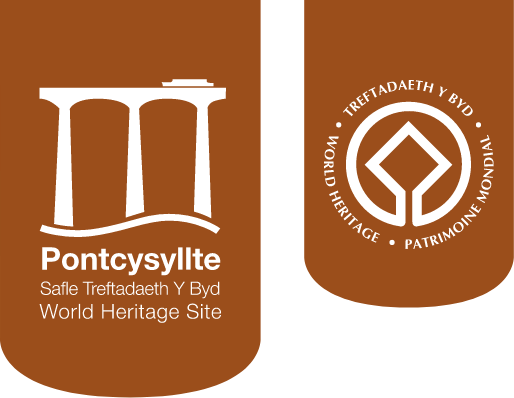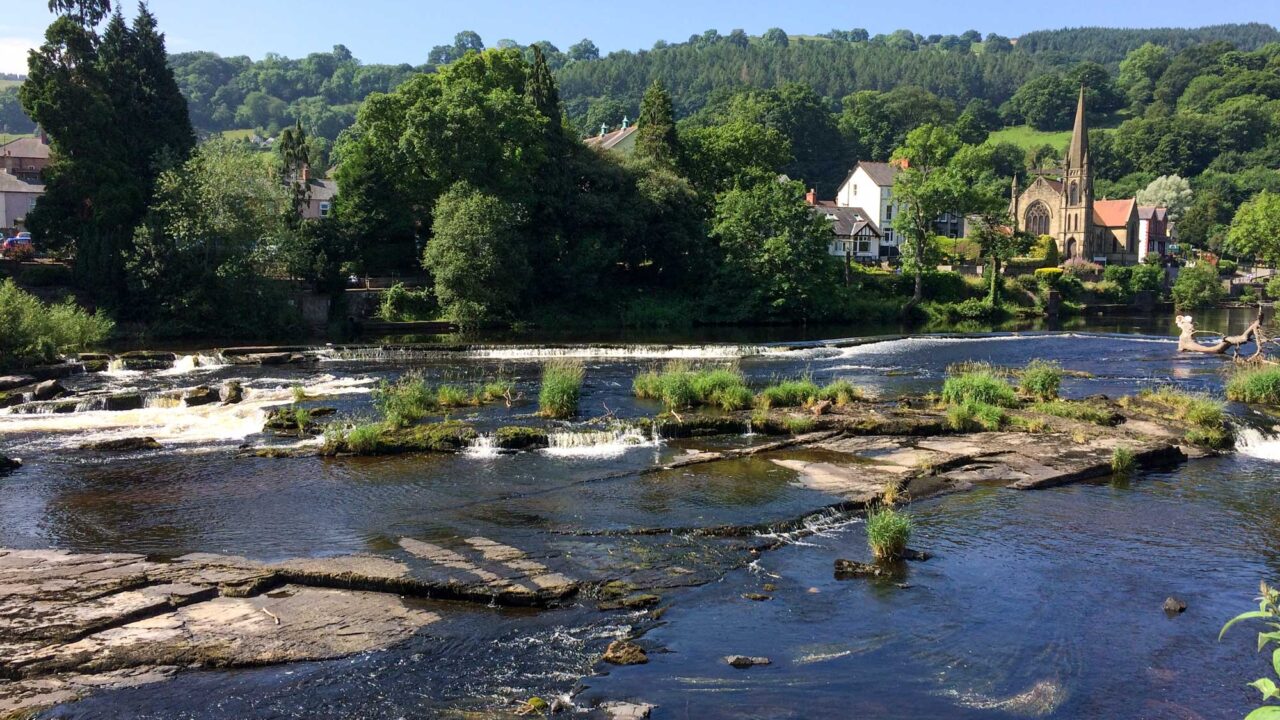Introduction
Llangollen developed around the bridge over the River Dee from the 1300s onwards. Abundant water from the River Dee powered corn mills and later fulling mills as the town grew and prospered. Most of the farms in the hills were sheep farms and both spinning and weaving were important in the area.
The Llangollen Canal boosted trade, bringing in coal to fire the limekilns in the Valley and providing cheaper, more reliable transport for slate and limestone quarried from the hills above. It also provided another reliable water source to power mills.
The A5 Holyhead Road, built in the 1820s to speed the journey from London to Dublin, and later the railway brought more trade and tourism to Llangollen and the Dee Valley.
Click on any Point of Interest marker to view the description
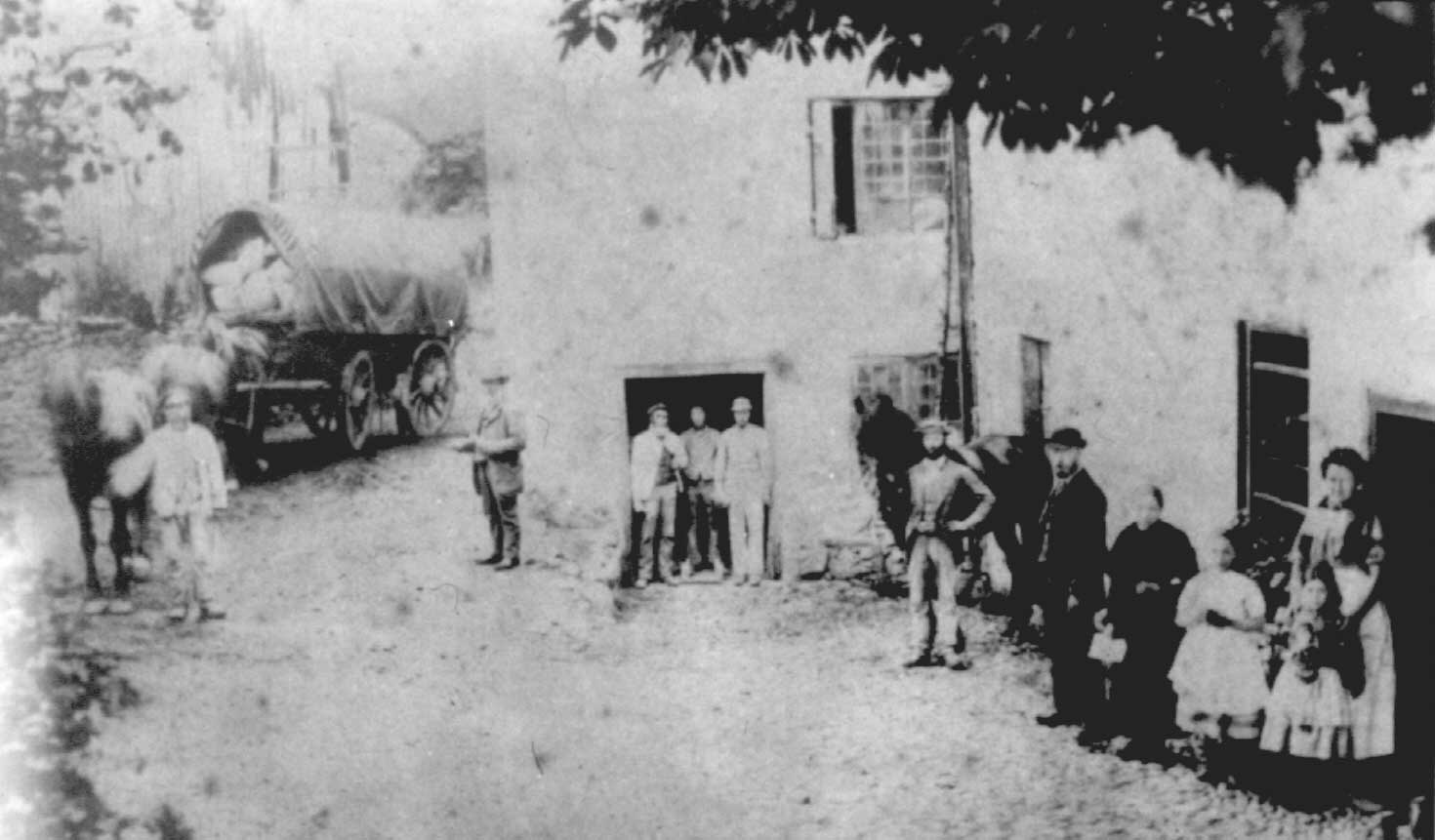
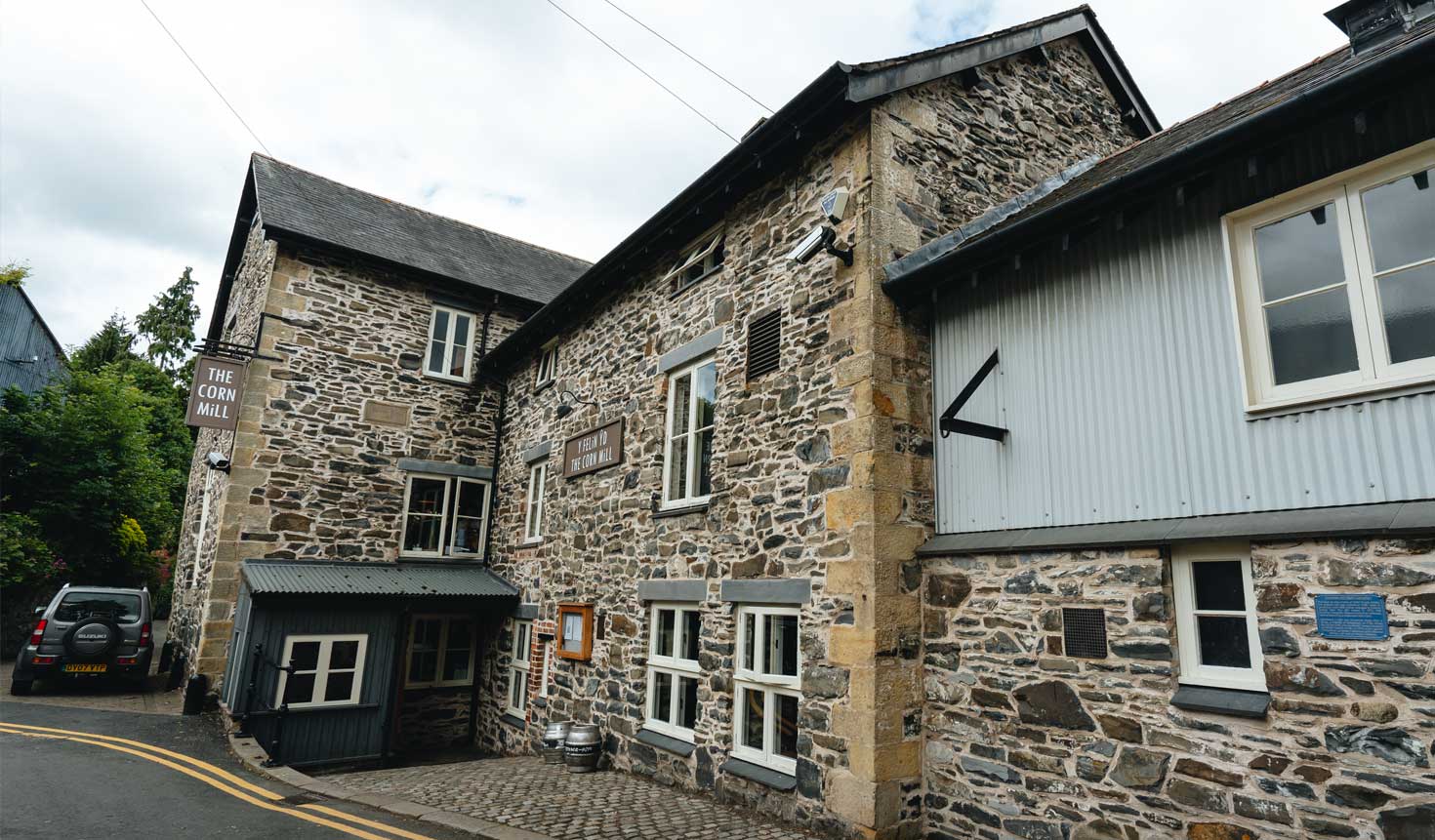
The Corn Mill
Listen to…
…the sound of cyclists on the towpath
1. St Collen’s Church
Llangollen takes its name from the church founded by Saint Collen around 600AD. Collen was a champion of Christianity and is said to have come here after murdering a local man-eating giantess who guarded the nearby Horseshoe Pass. A well at the top of the Pass is believed to be the natural spring where Collen washed his bloody hands and sword.
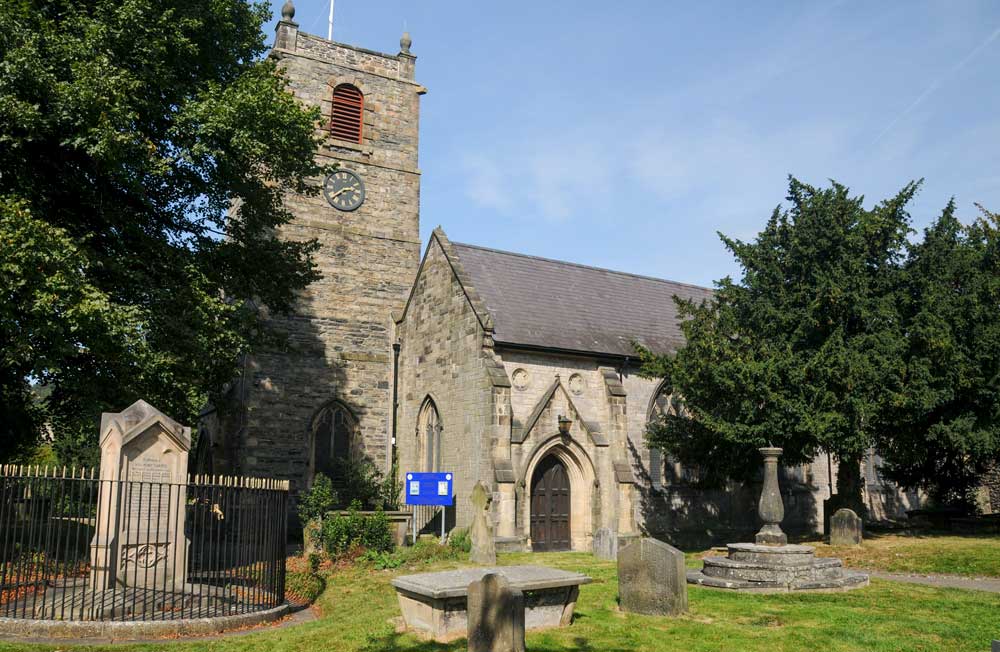
St Collen’s Church © Jo Danson
The present church dates from the 1200s, replacing an earlier wooden church. A wooden tower was added in 1500 but later replaced by the stone tower.
Inside the church is a spectacular carved oak ceiling that dates from 1530 and is amongst the greatest medieval treasures in Denbighshire. An ancient oak chest has three keyholes so that all three church wardens had to be present when it was opened!
The church was changed from a double nave form into a more conventional three aisled church in the mid-1860s.
Inside the church there is a plaque donated by Dr Mary Gordon who wrote a book about the Ladies of Llangollen in the mid 1930s. Strangely the figures were not modelled on the ladies, but on Mary Gordon and her sculptress Violet Labouchere. Immediately outside the church is a triangular memorial to the Ladies and their maid Mary Carryl.
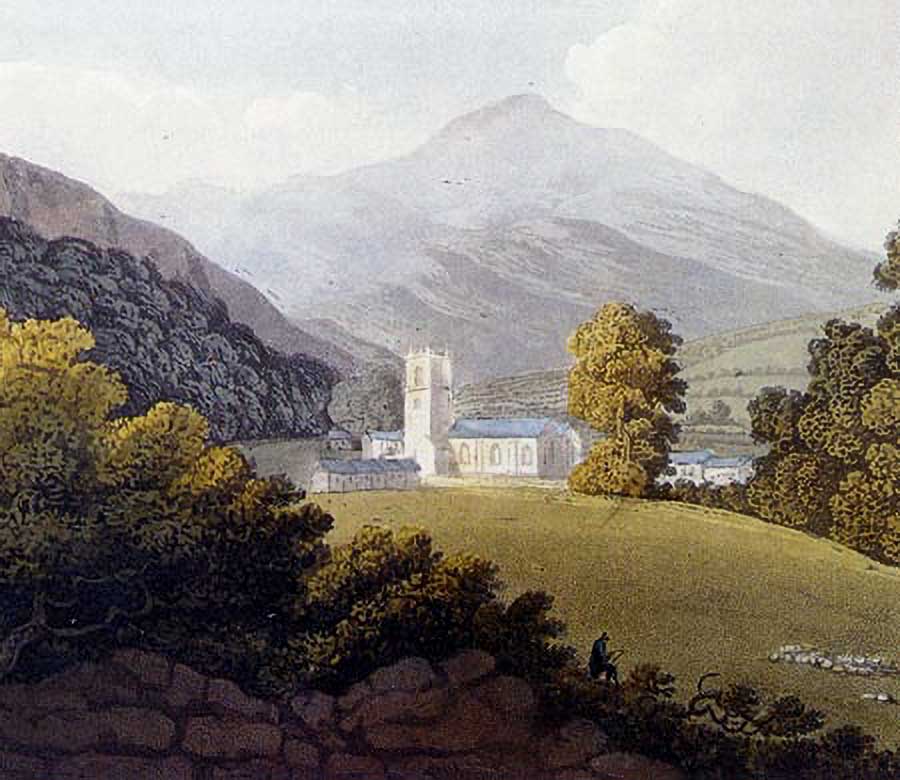
St Collen painting by Edward Pugh © National Museum Wales
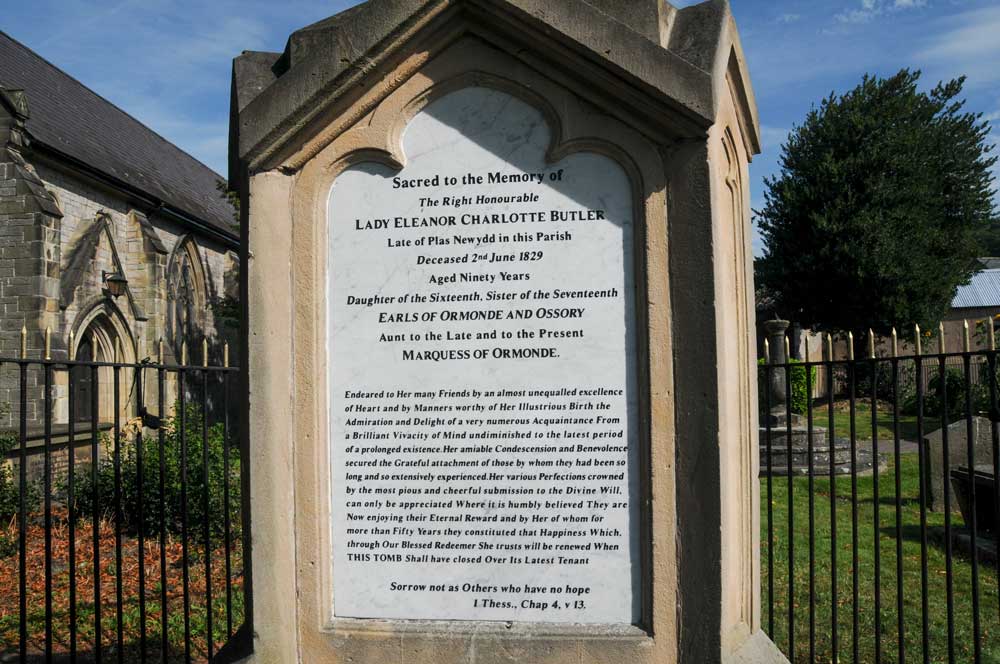
Ladies of Llangollen Memorial © Jo Danson
2. Llangollen Bridge
Llangollen Bridge is one of the seven wonders of Wales as described in the rhyme
Snowdon’s mountains without its people
Overton yew trees, St Winifrede’s well
Llangollen’s bridge and Gresford bells
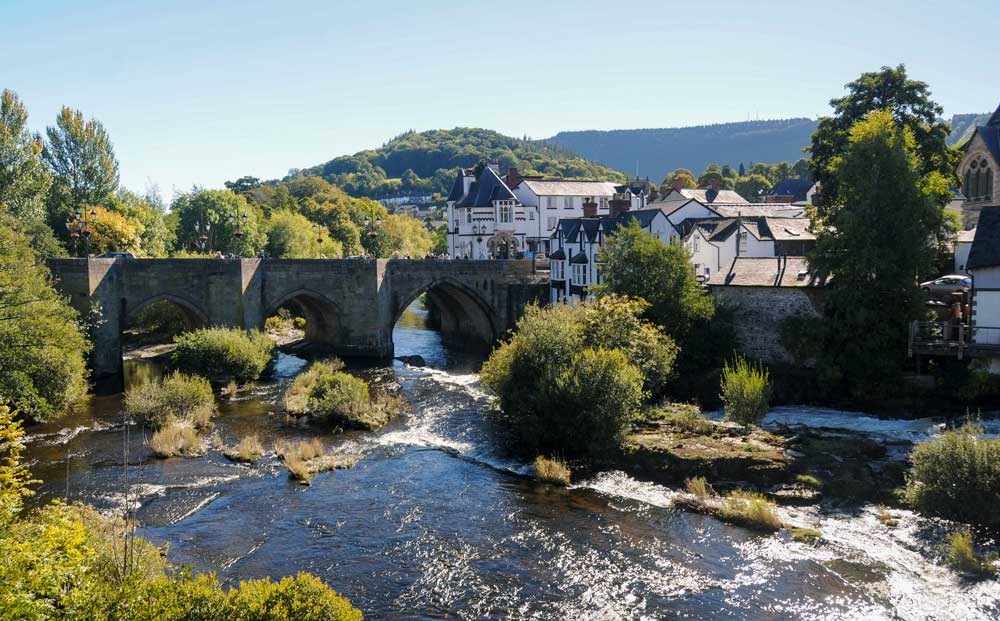
Llangollen Bridge © Jo Danson
A bridge was recorded as early as 1284, but the existing bridge is said to have been constructed by John Trevor, Bishop of St Asaph in the 1500s. A major rebuilding of the bridge took place in 1656 at a cost of £250, indicating a great deal of work was required. Fragments of decorated slabs from Valle Crucis Abbey were found, so it seems likely that the abbey must have been used as a quarry during the 1656 alterations.
An extra arch, complete with a round castellated tower was added in 1863 to allow the railway into town. The roadway had to be raised and the parapets were rebuilt to achieve the necessary height. There was a café in the tower to serve the many visitors to the town.
The bridge was only 8 feet wide and so by 1873 it could not cope with the increase in traffic as industry prospered. It was decided to double its width, faithfully reproducing the original design, with all the necessary work done on the side next to the new station.
The castellated tower was demolished by 1940 to help improve the road layout but traffic problems continued and the bridge was widened again in the late 1960s on the same upstream side.
Today the V shaped stonework that helps to divert the river around the bridge piers also provides a safe space on the bridge to watch the river and the daring kayakers descending the challenging rapids. The scene on the river would have been very different in the late 1800s when fishermen used coracles to fish for salmon.
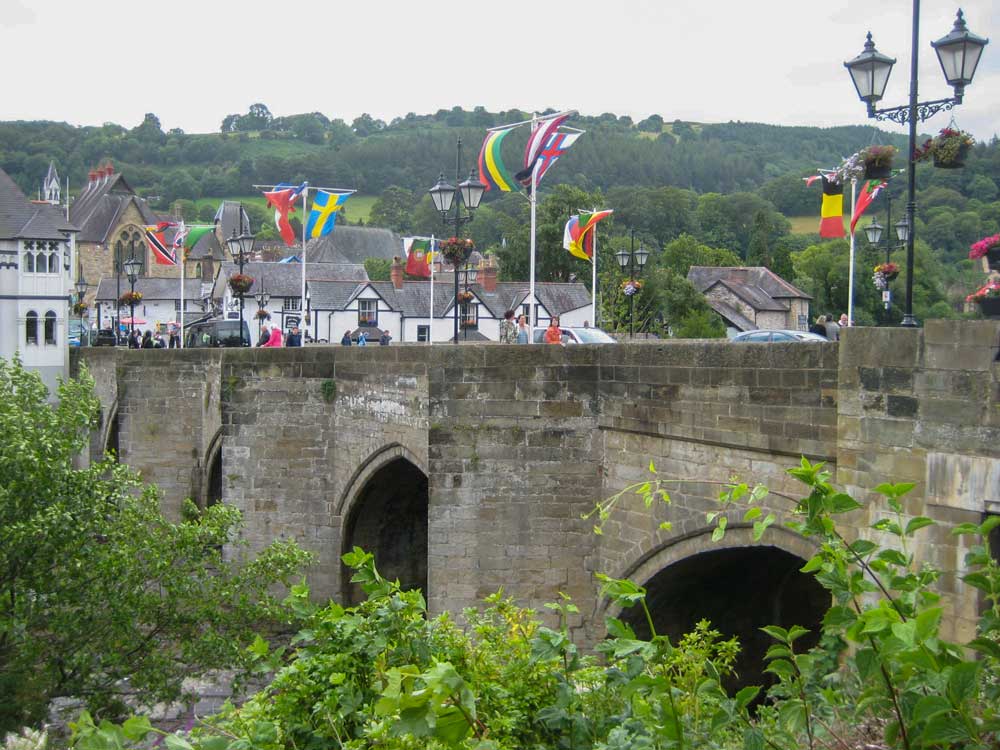
© Heather Williams
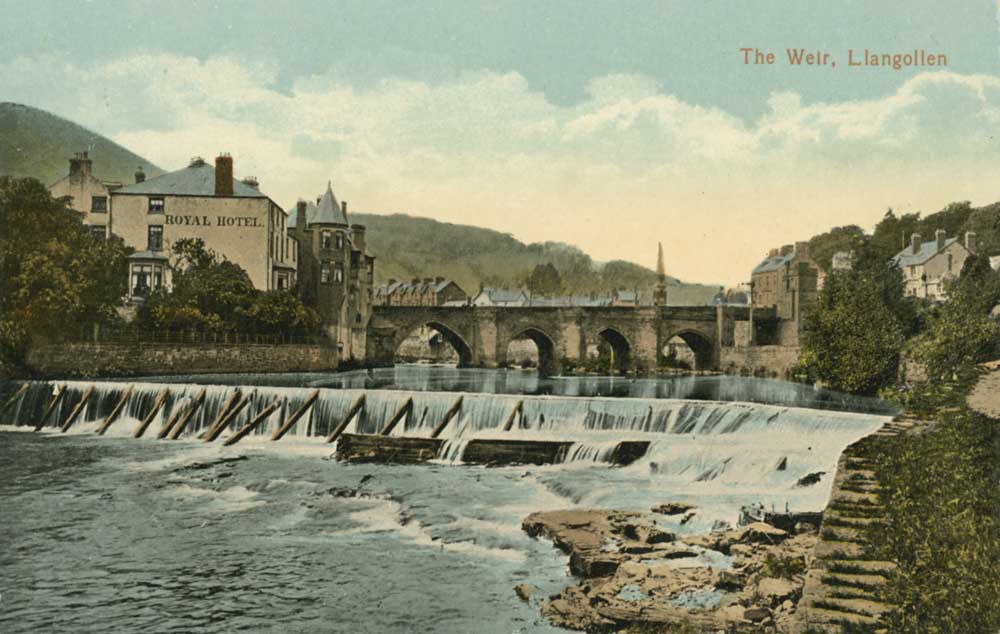
© Crown copyright: RCAHMW
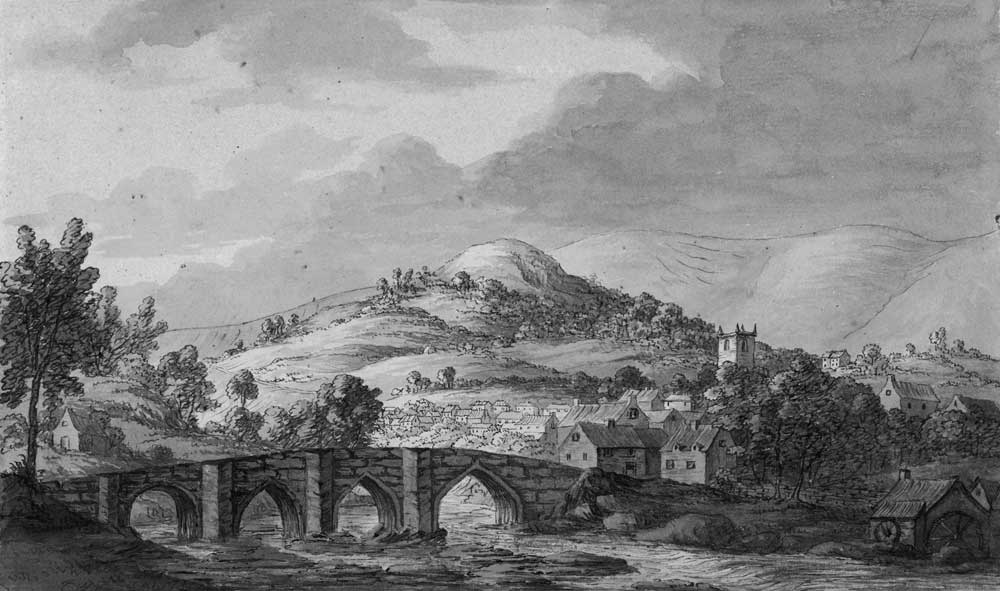
Image from the collections of the National Monuments Record of Wales © Thomas Lloyd Collection
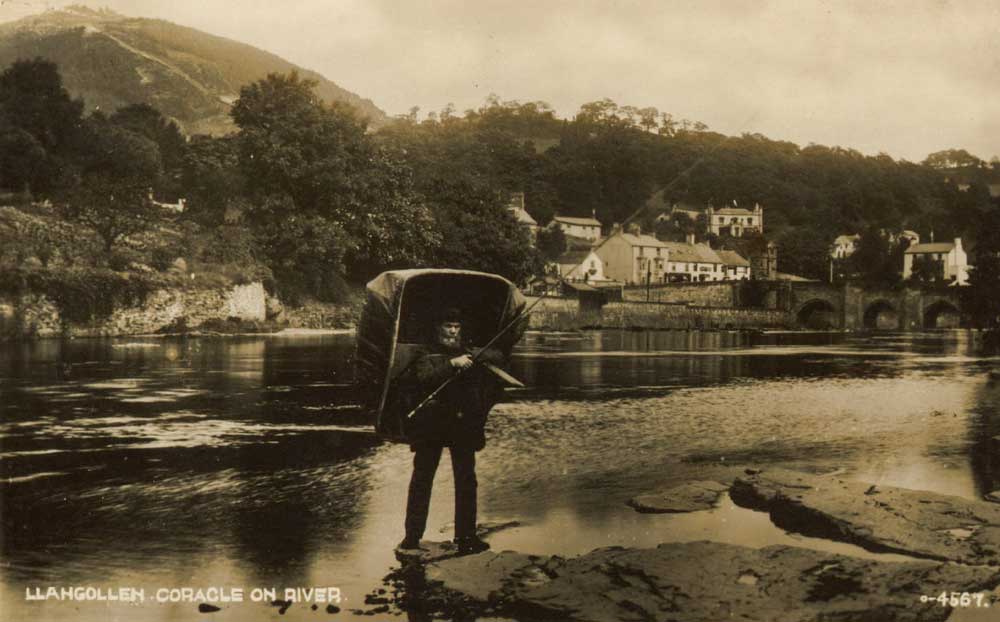
Traditional coracle 1890s © Llangollen Museum
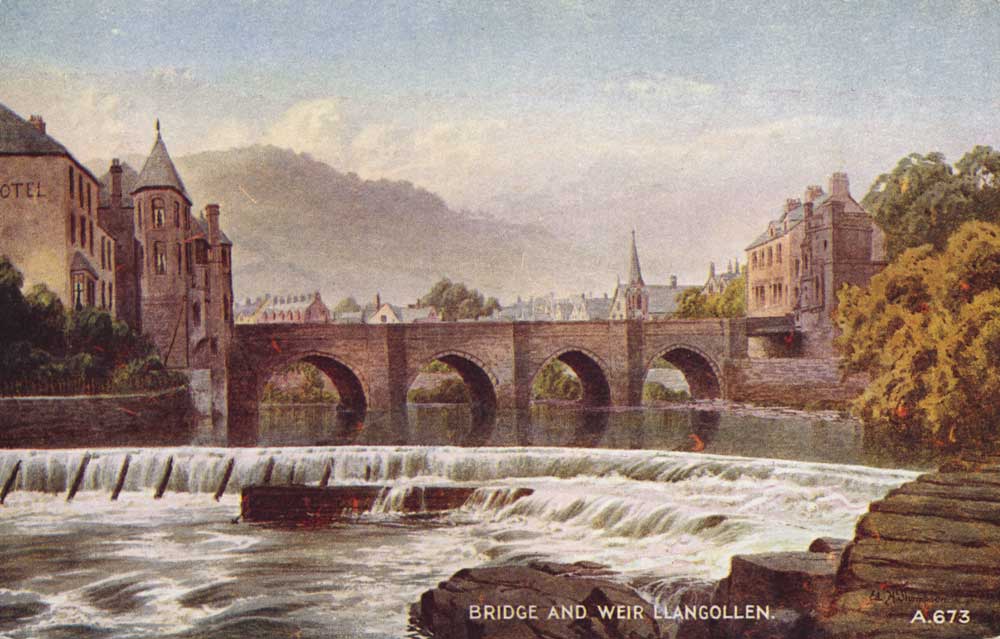
© Crown copyright RCAHMW
3. Hand Hotel, Bridge Street
The Hand Hotel was one of the most important coaching inns in Llangollen when Bridge Street was the main road through town before the A5 was built. The hotel takes its name from the red or bloody hand which formed the crest of the Myddelton family of Chirk Castle.
It was much favoured by travellers who made an overnight stay here on their coach journey from London to Dublin. It had a reputation for luxury accommodation with a nearby building provided rooms for the servants accompanying wealthy visitors.
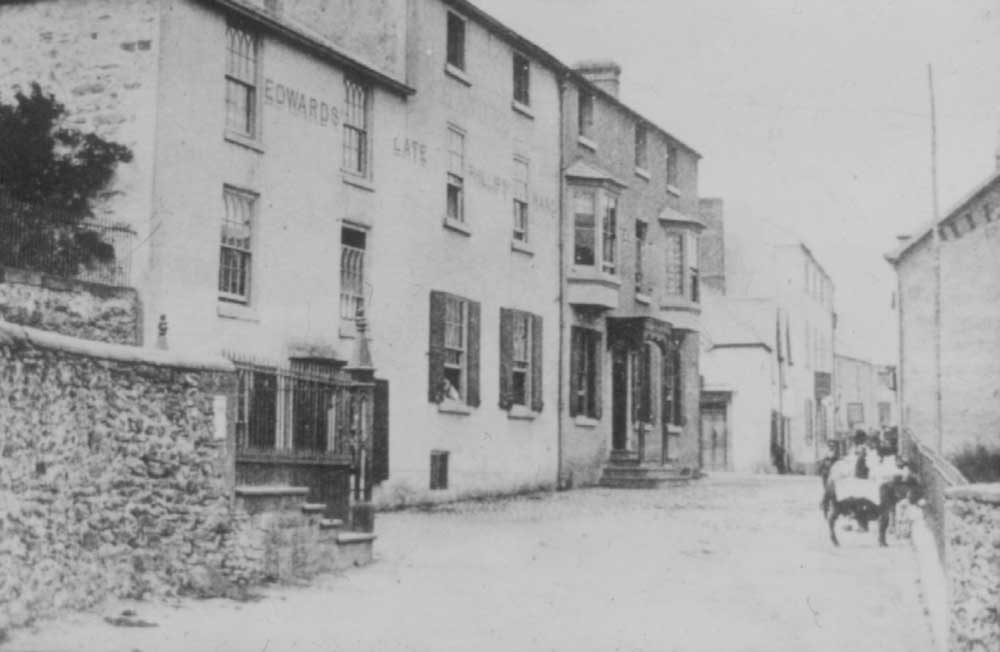
Hand Hotel 1860s © Llangollen Museum
From 1752 the Hand was kept by Thomas Edwards. He became friendly with Lady Eleanor Butler and Miss Sarah Ponsonby, the ‘Ladies of Llangollen’, no doubt because many of their famous visitors stayed at the Hand. In the 1780s he begged them to use his pew in the church!
Jos Phillips owned the Hand Hotel in 1830 when Princess Victoria stopped in Llangollen with her mother and apparently his young daughter presented the Princess with a doll dressed in full Welsh costume.
Famous visitors to the Hand include Charles Darwin who stayed here in 1831 at the start of a geological tour of North Wales and the poet Robert Browning who stayed here for ten weeks in 1886 with frequent visits to his friends Sir Theodore and Lady Helena Martin at nearby Llantysilio.
By the 1920s the hotel had 60 bedrooms, a drawing room, dining room, billiards room, a smoking room and a writing room together with a covered garage with space for 30 cars.
Today the Hand Hotel continues to welcome guests, although some of the public rooms have changed their functions to reflect modern times and visitors can relax watching the river from the hotel gardens.
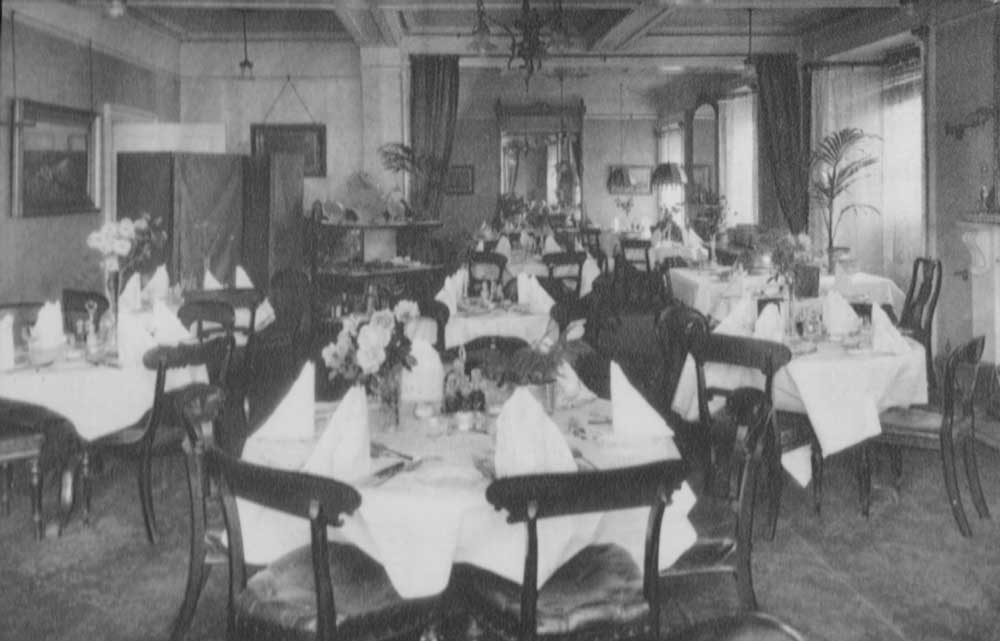
© Llangollen Museum
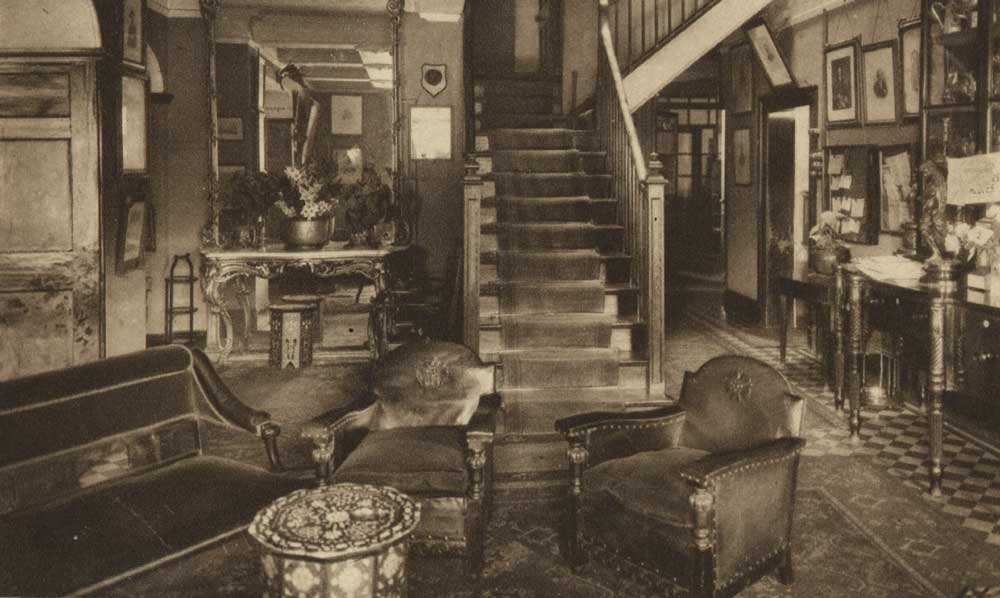
© Llangollen Museum
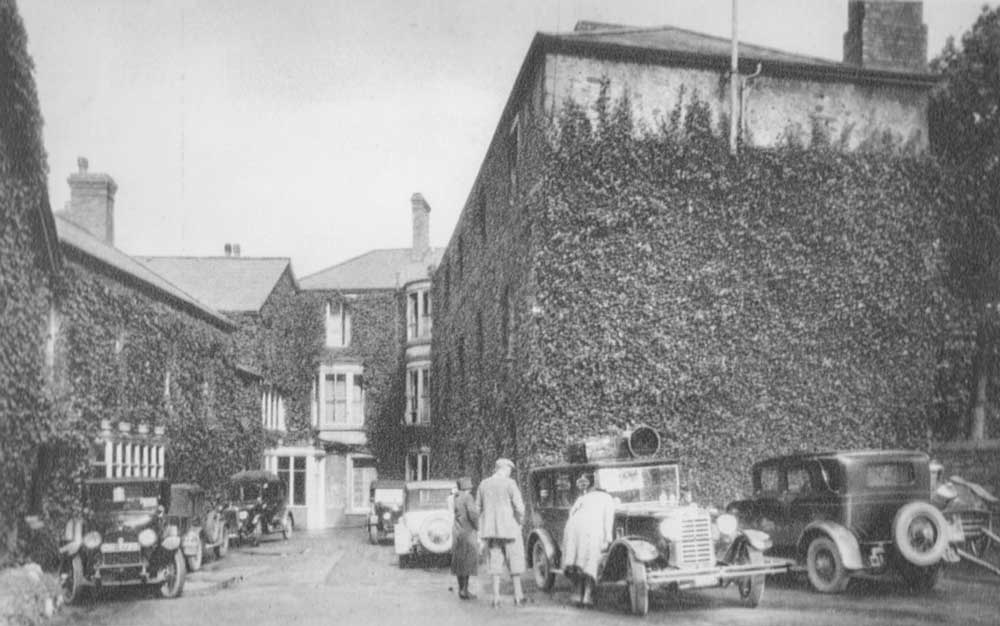
© Llangollen Museum
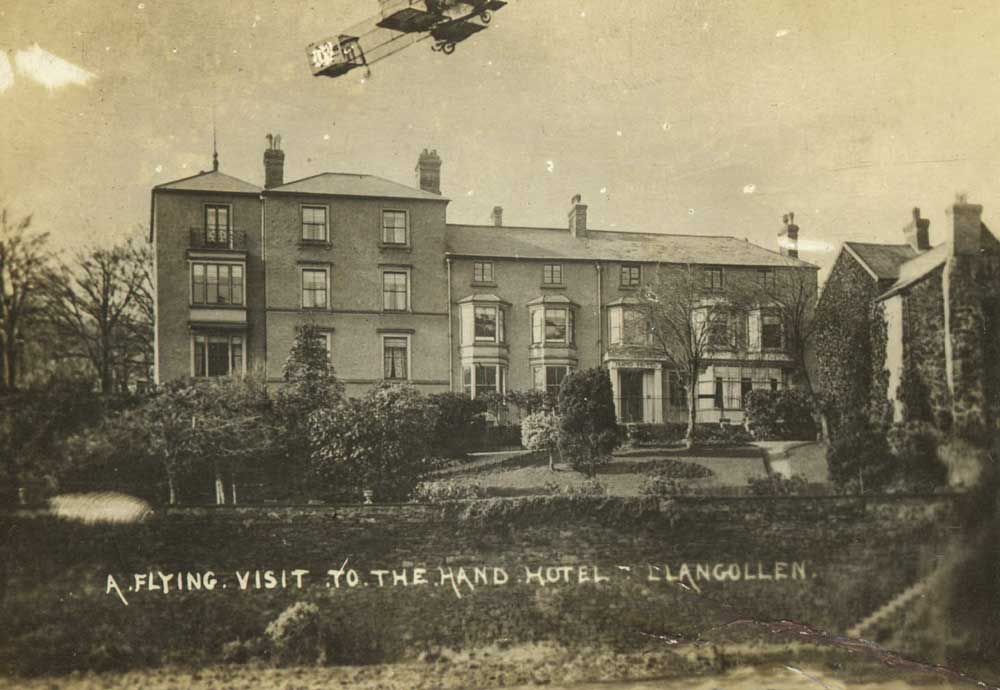
© Llangollen Museum
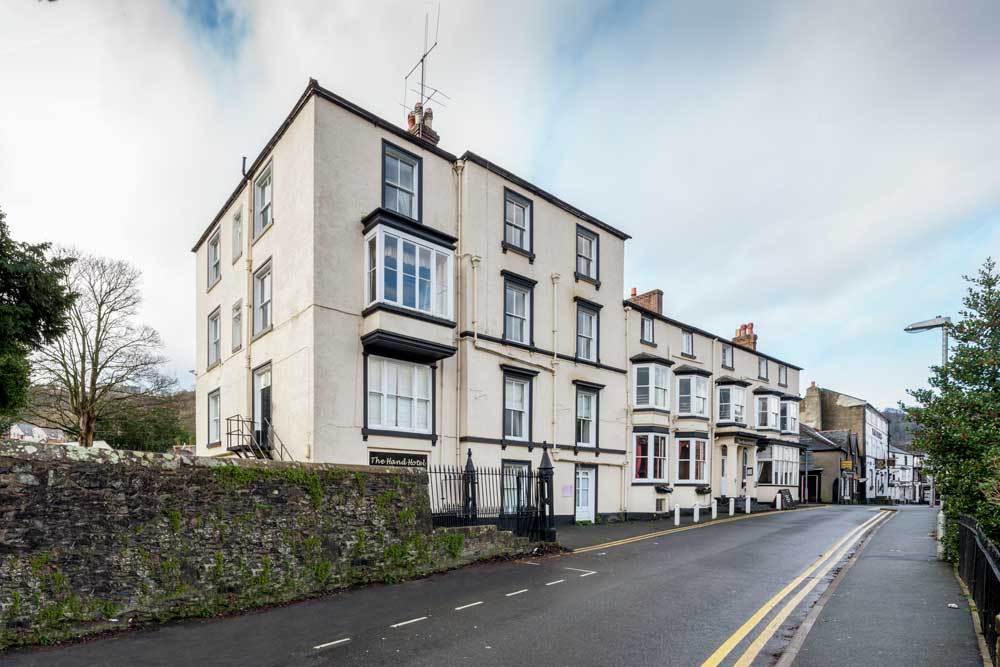
Hand Hotel
4. The Royal Hotel, Bridge Street
The Royal Hotel overlooking the River Dee dates back to the mid 1750s when it was called The King’s Head and was an important coaching inn. It was first rebuilt and enlarged in 1815, with further alterations later as more tourists came to Llangollen.
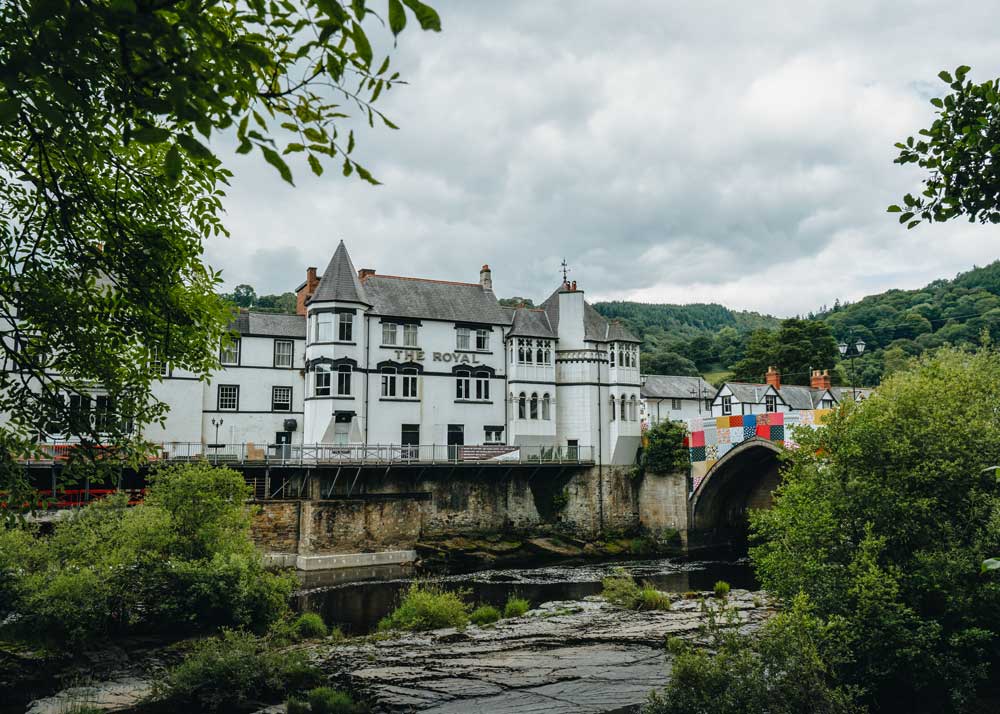
The Royal
The hotel used to employ harpists to play Welsh music here. In 1829 the German composer Felix Mendelssohn stayed at the hotel and was not impressed. He wrote ‘A harpist sits in the hall of every reputable tavern incessantly playing so-called folk melodies – dreadful, vulgar, out of tune trash… A fellow in the hall is playing, it’s making me so angry I can’t go on!’
W T Simpson had a different view! In his book he says ‘the ale brewed in Llangollen is in great and deserved repute all over the kingdom’ and goes on to say that that the excellent accommodation at the Hand and the King’s Head were unsurpassed. Post carriages and horses were kept at both and the harp resounded in their halls.
Taking advantage of Princess Victoria’s journey through the town, the hotel changed its name to the Royal Hotel in the mid-1800s although there are conflicting reports as to where the horses were changed!
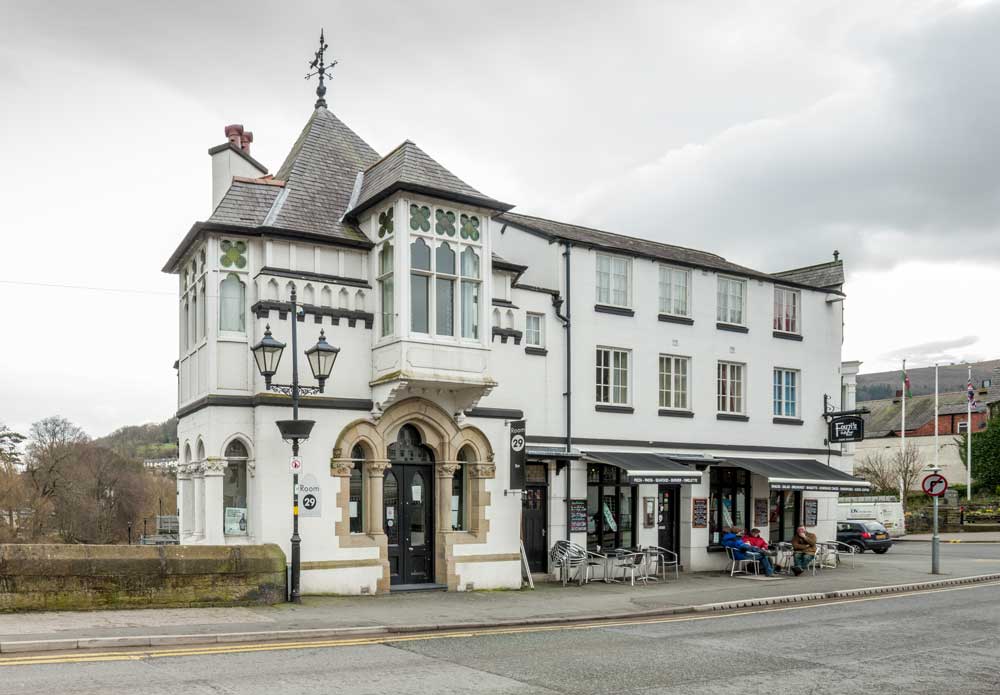
© Crown copyright RCAHMW
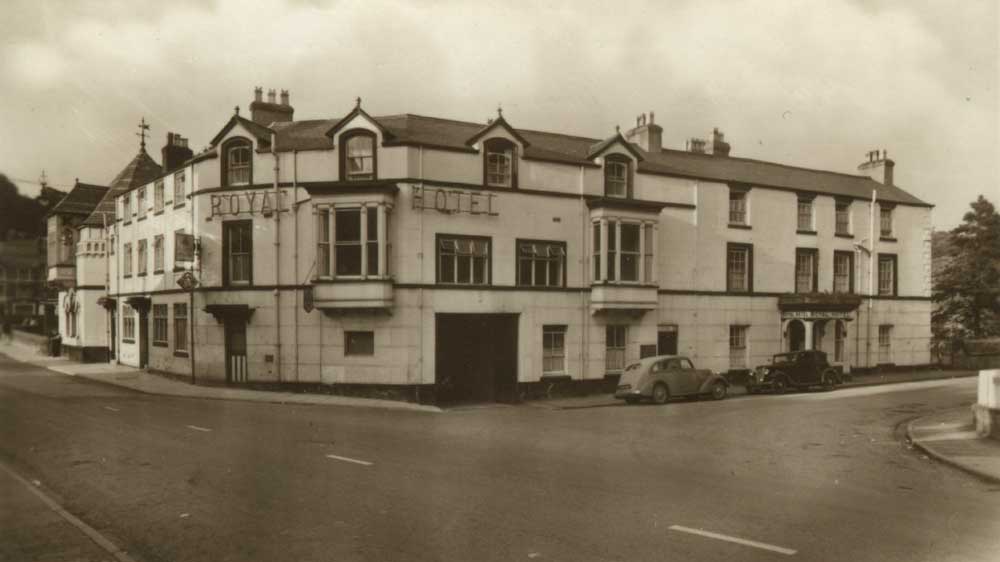
Royal Hotel early 1900s © Llangollen Museum
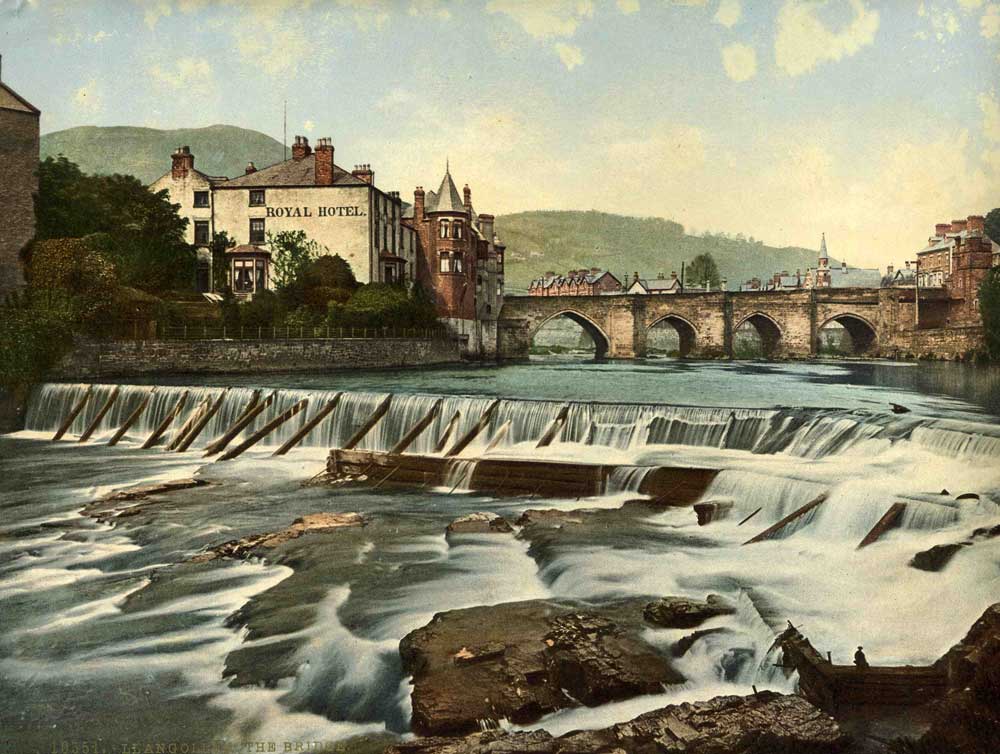
Royal Hotel 1900 © Llangollen Museum
5. Castle Square, Castle Street
Castle Street has some fine buildings dating from the 1860s as the town was developing into an important shopping centre.
The Town Hall was built by Morris Roberts in 1867. Shoppers originally entered through open arches to where the market was held. Shortly afterwards the market area was divided up into separate shops which is how it appears today.
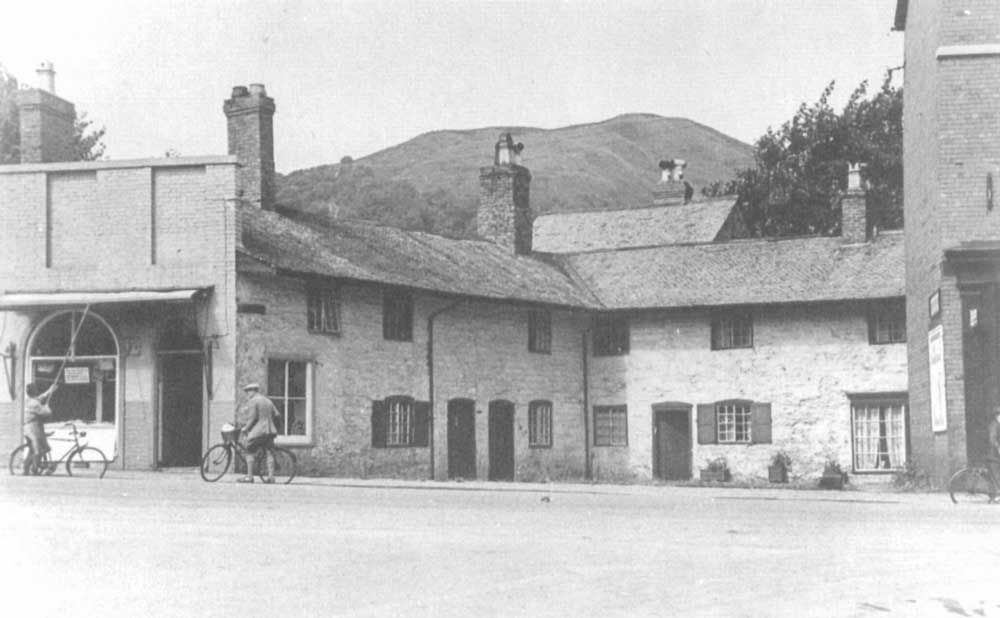
Castle Square 1920 © Llangollen Museum
The area opposite the Royal Hotel was called ‘Ham and Egg Square’ in the 1800s as residents in the cottages used to cook quick and easy meals, usually ham and eggs, for travellers on the London to Holyhead road as well as for rail passengers.
Later it was known as Castle Square with businesses including a draper, a milliner and a farmers’ supply store.
Nearby is the former Welsh Baptist Chapel which was built at the same time. It was designed to hold a congregation of 400 but by 1982 the chapel was no longer needed. The building was restored and in 2003 it was opened by the great Welsh artist Kyffin Williams. Now called Y Capel, it houses a Tourist Information Centre, an exhibition space and a library on the upper floor.
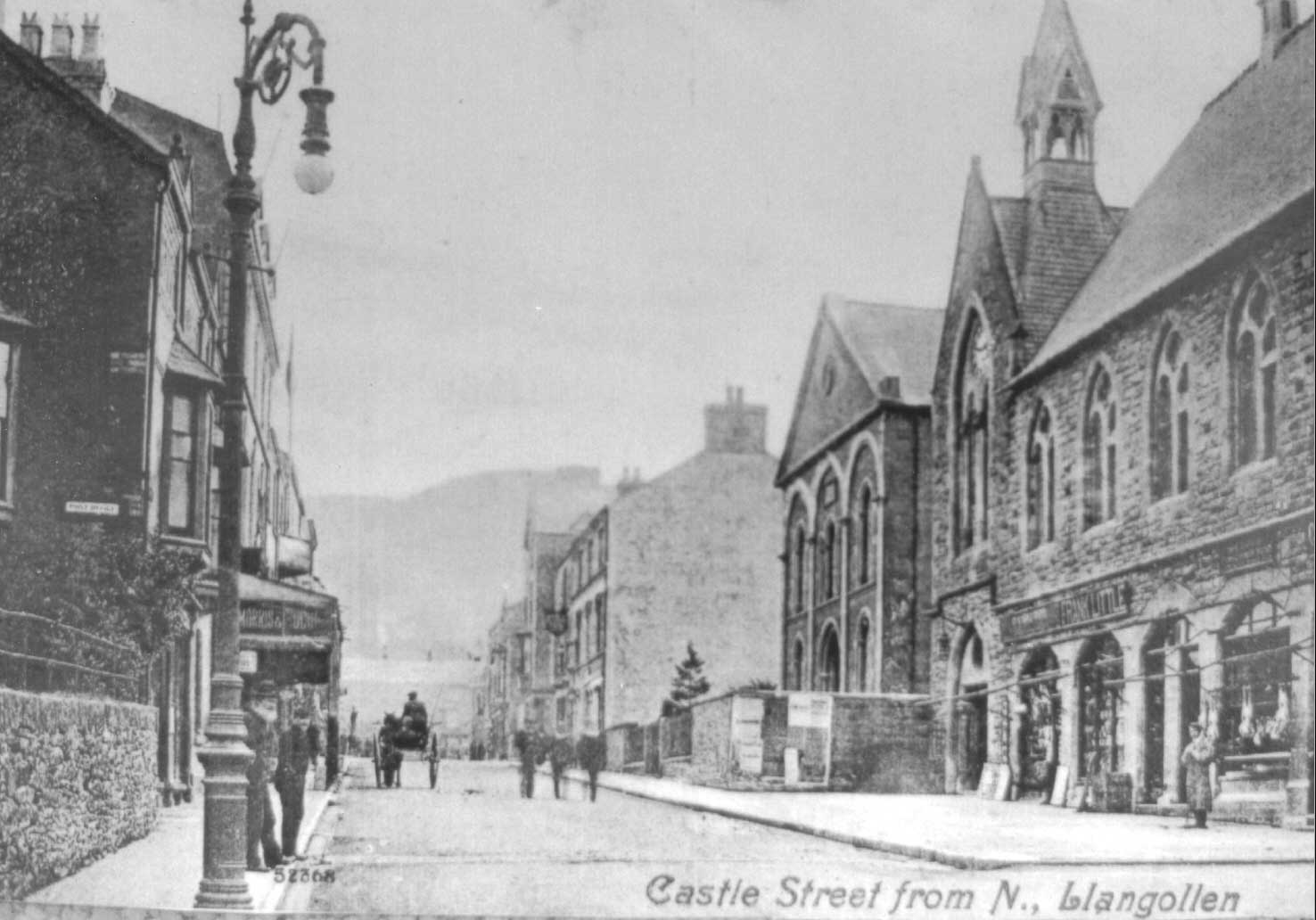
© Llangollen Museum
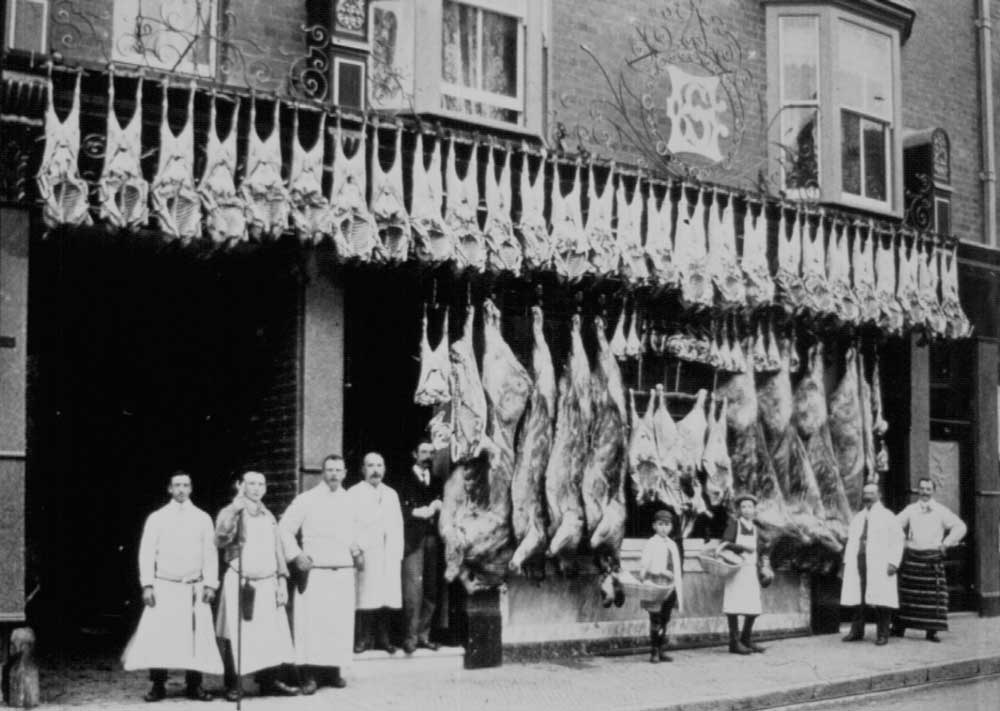
© Llangollen Museum
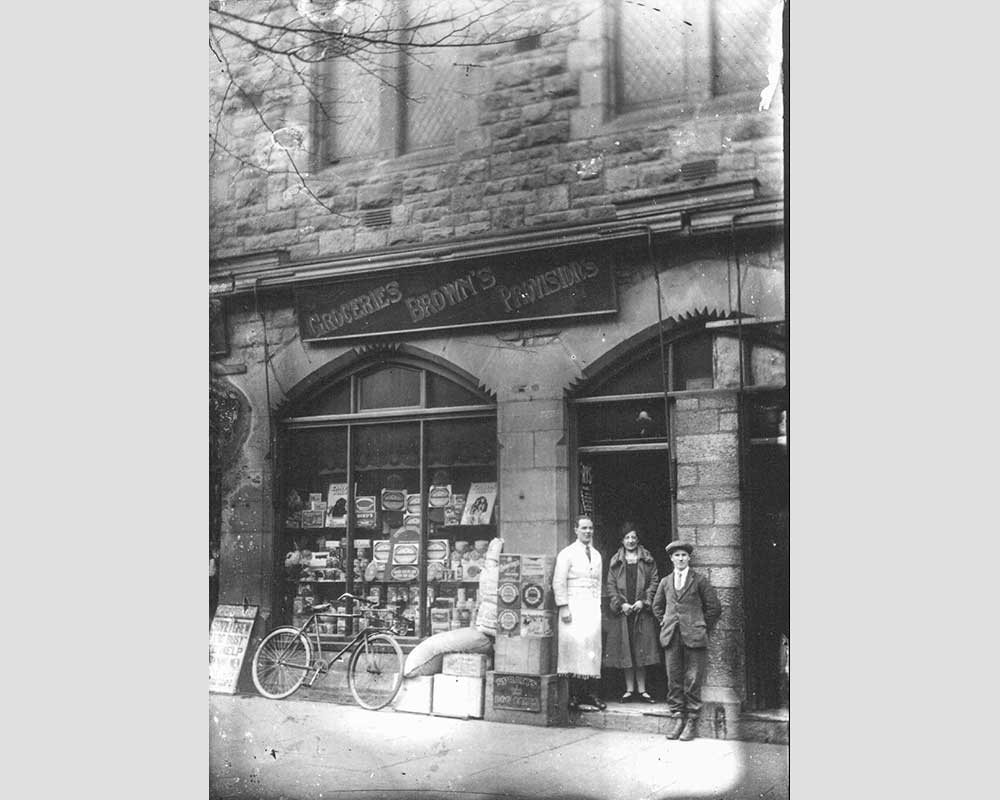
John Brown Provisions 1920 © Llangollen Museum
6. Corn Mill and Victoria Promenade
Corn was ground in the mill from the 1200s when it was founded by the Cistercian monks of Valle Crucis Abbey and continued until 1895. After this time it was still used to produce animal feed until it closed in 1974.
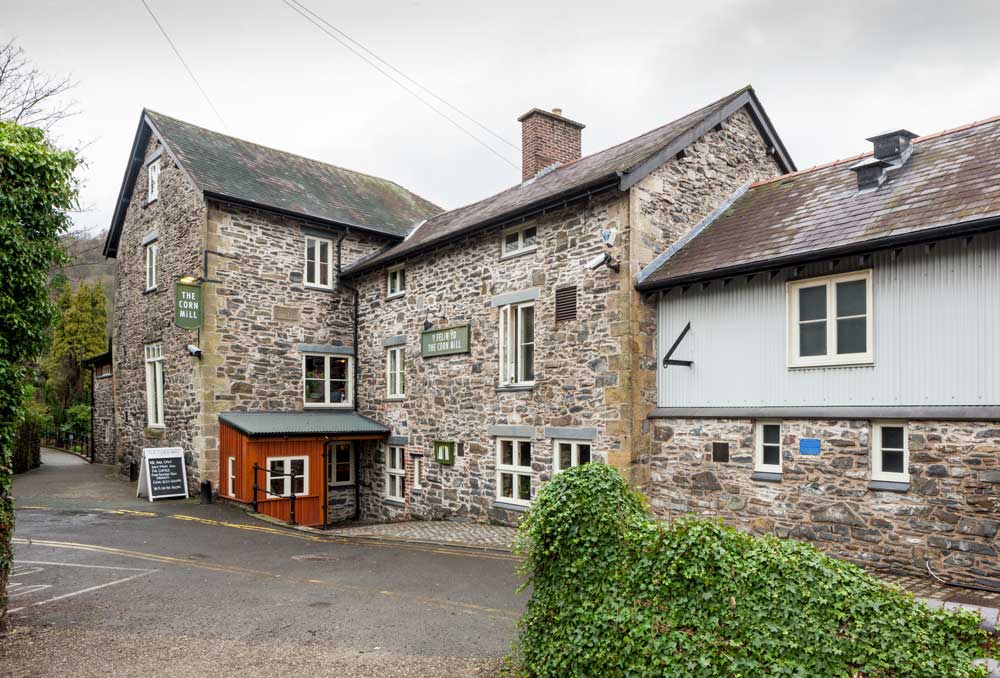
© Crown copyright: RCAHMW
Much of the original water-powered machinery was removed but a water wheel has been preserved and can be seen through glass floors in the restaurant.
The beautiful riverside walk along the River Dee starts by the Corn Mill. The scenic river is over 70 miles long and flows from its source beyond Lake Bala through Llangollen and Chester to Liverpool Bay. The river is nationally important and is home to Atlantic salmon, freshwater pearl mussels and otters.
The walk was originally called Ceryg y Llan and was thought to be one of the finest riverside walks in the United Kingdom. It was re-named Victoria Promenade to commemorate the Diamond Jubilee of the Queen Victoria in 1897 – the people of Llangollen fondly remembering another visit of Victoria to the Llangollen area in 1889. The walk became very popular with locals and visitors alike, with groups of people promenading on summer Sundays dressed in their best clothes.
The promenade leads to the Riverside Park. The land was purchased from a fairground operator James Cook in 1920 and opened as a park in 1921 with further improvements carried out in 1922.
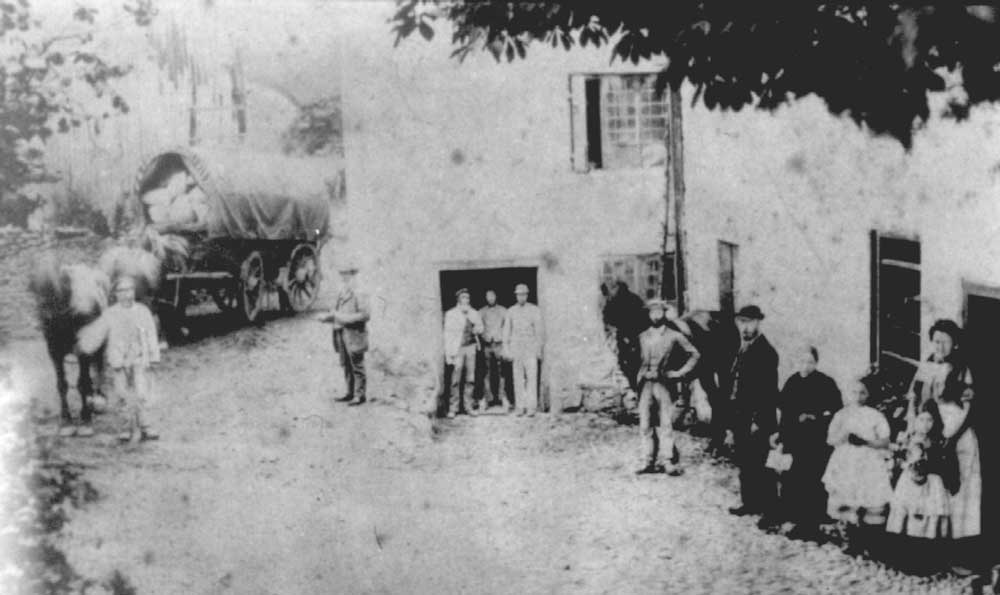
William Jones, Corn Mill owner, 1887 © Llangollen Museum
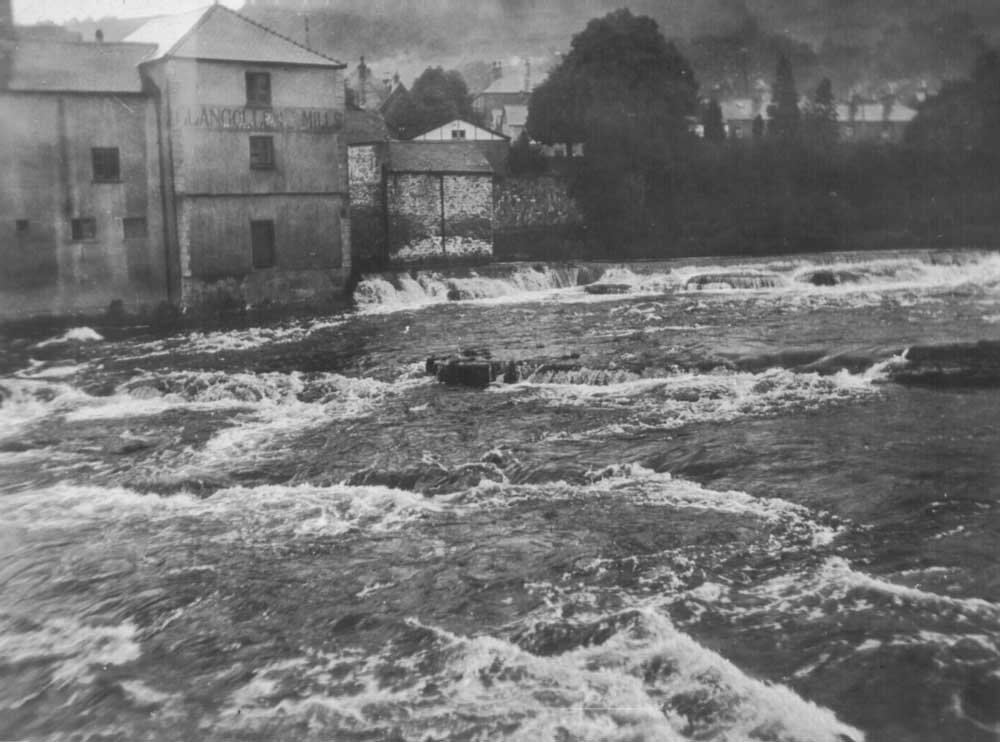
Corn Mill 1945 © Llangollen Museum
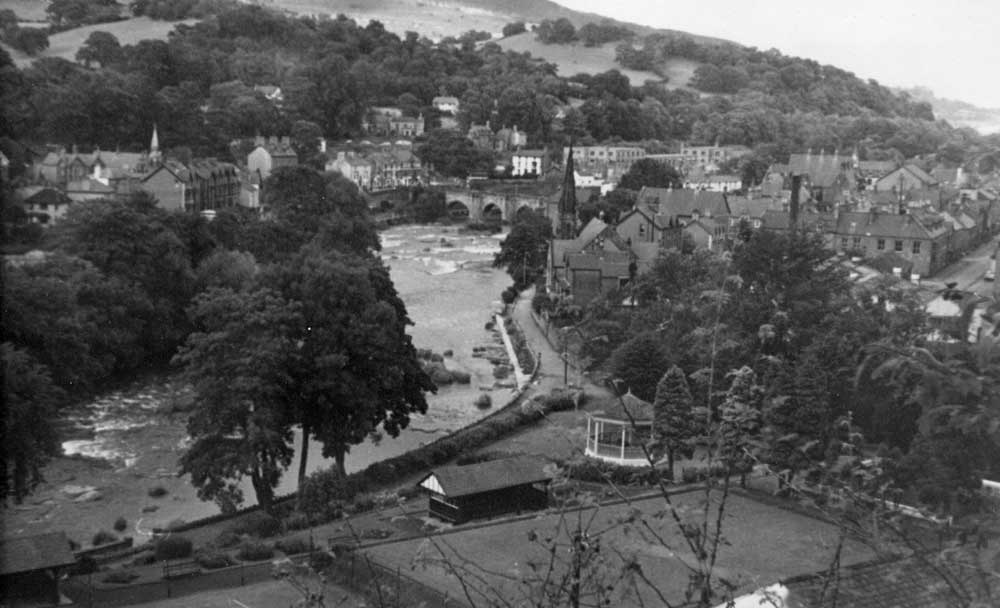
© Llangollen Museum
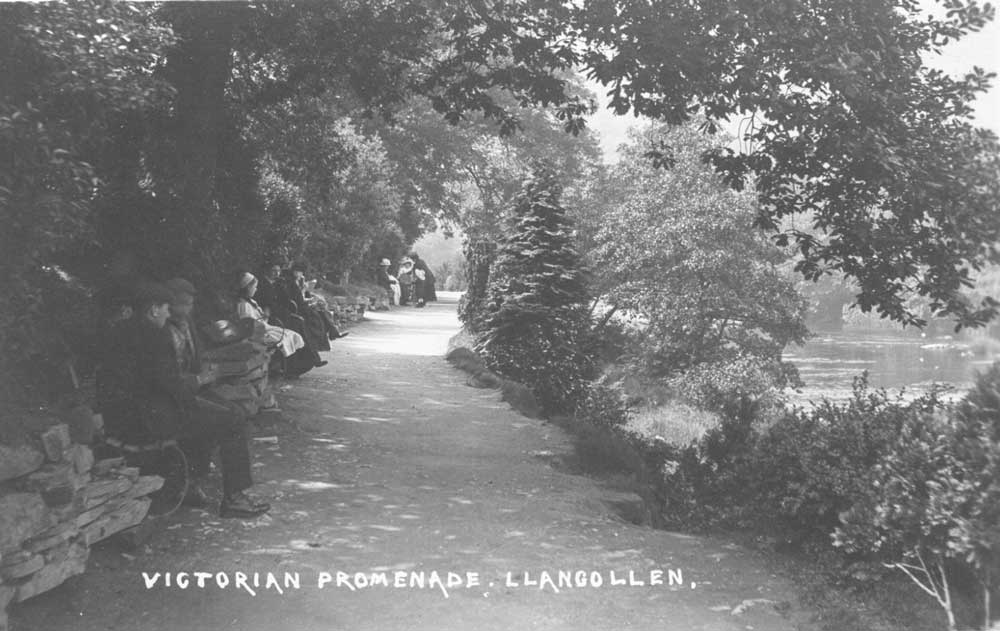
Victoria Promenade 1920 © Llangollen Museum
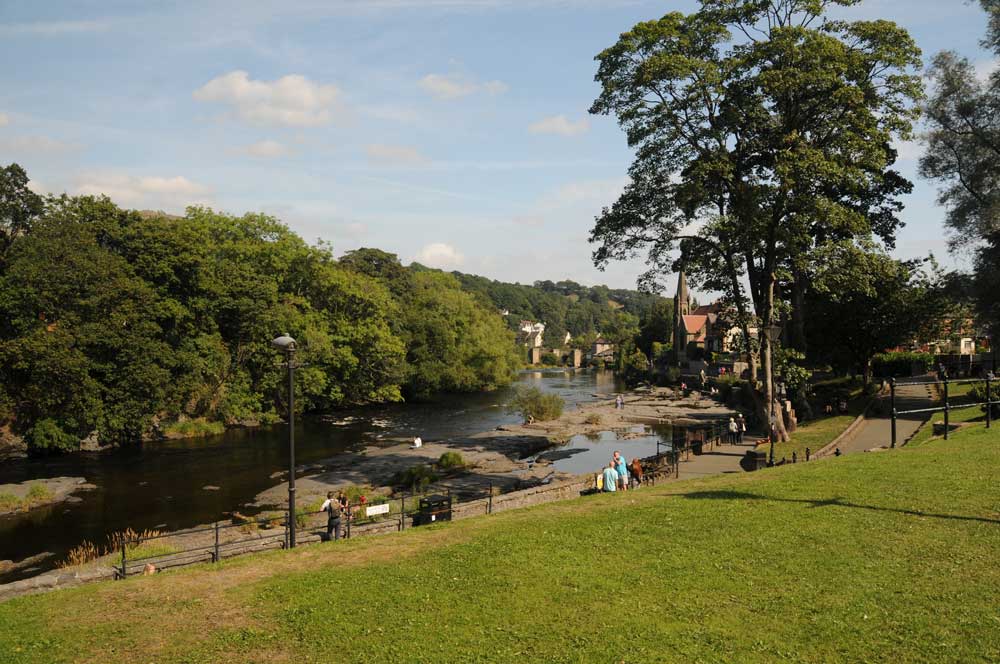
© Jo Danson
7. Plas Newydd
Plas Newydd was the home of the ‘Ladies of Llangollen’ in the late 1700s. Lady Eleanor Butler and Sarah Ponsonby had run away from Ireland and settled here, describing Llangollen to be ‘the most beautifullest country in the world’.
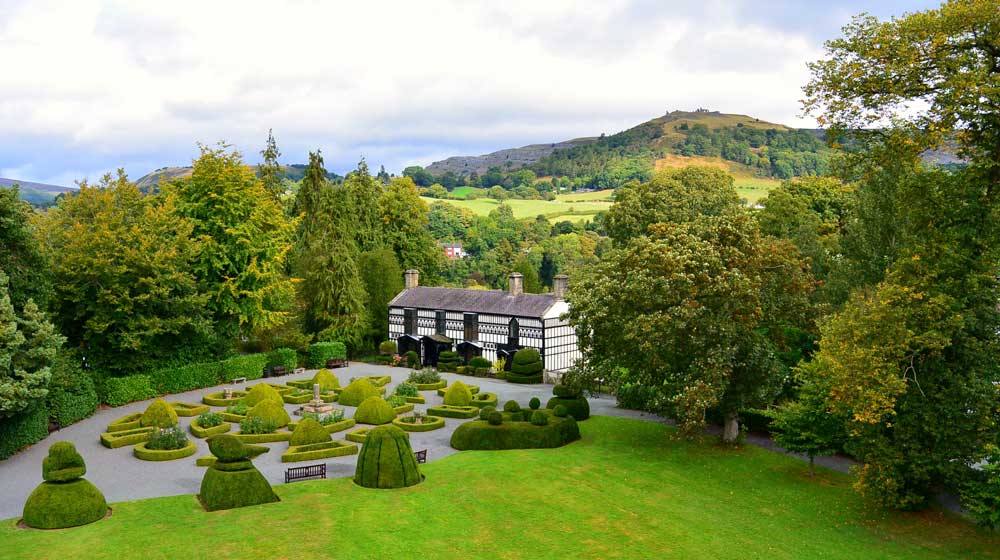
© Denbigshire County Council
Ladies of Llangollen – Champions of the Picturesque
They set up home in a cottage and renamed it Plas Newydd. They spent their time writing, reading, sketching and embroidering, as well as transforming the house and gardens. They added a porch in 1814 and held a ‘porch warming’ party for selected friends!
Cows grazed in the meadow in front of the house. The lower woodland garden where the Cyflymen stream runs was enhanced with rustic bridges, seats and a grotto, said to have come from Valle Crucis along with a font.
North Wales was becoming popular with tourists at that time and the Ladies together with their house and gardens became quite an attraction. The Ladies had a distinctive style, dressed in long dark coats with white ornamental neck cloths and top hats. Many famous people visited them including the Duke of Wellington, Lord Byron, Sir Walter Scott and William Wordsworth. After his visit Wordsworth sent the ladies a poem composed in the grounds but Ladies were not amused by the house being referred to as a ‘low roofed cot’ and thought they could write better poetry themselves! Anne Lister of Gentleman Jack fame was another visitor.
After the deaths of Lady Eleanor Butler in 1829 and Miss Sarah Ponsonby two years later, the house and contents were sold in an auction lasting seven days.
Visitors can enjoy the beautiful house and gardens today.
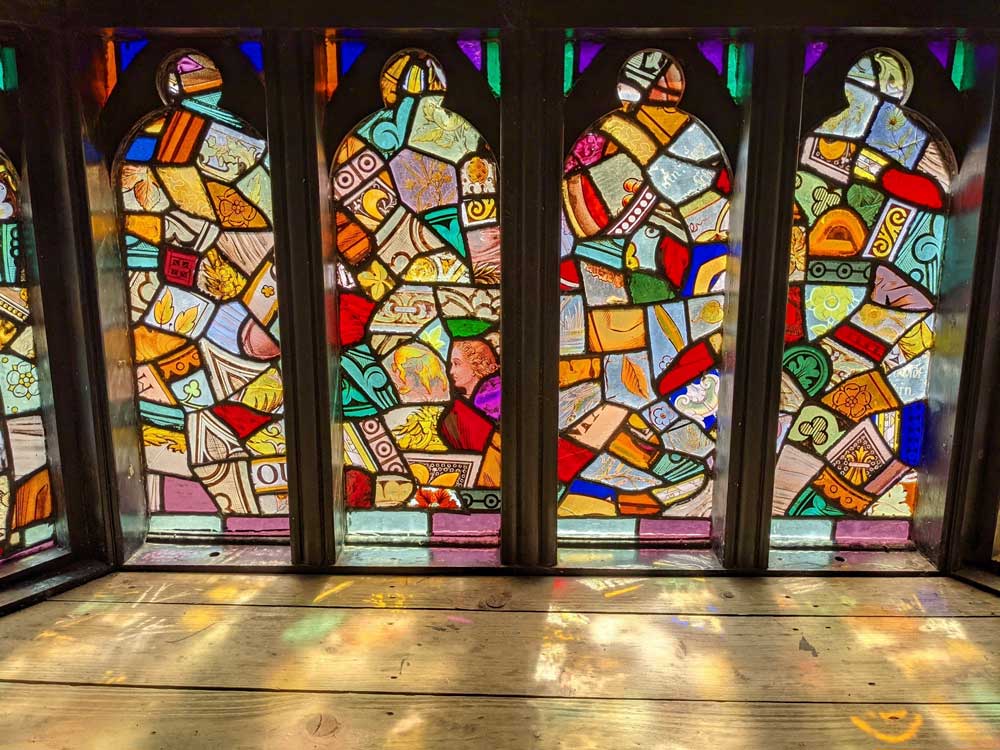
© Denbigshire County Council
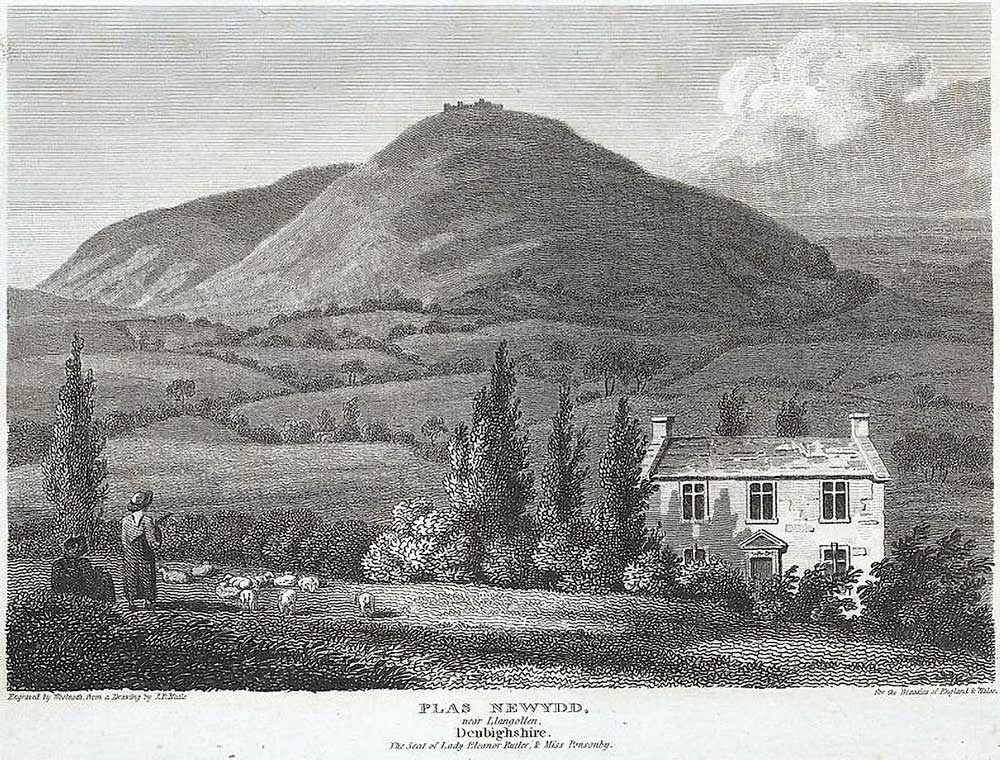
Plas Newydd 1813 Thomas Woolnoth © By permission of The National Library of Wales
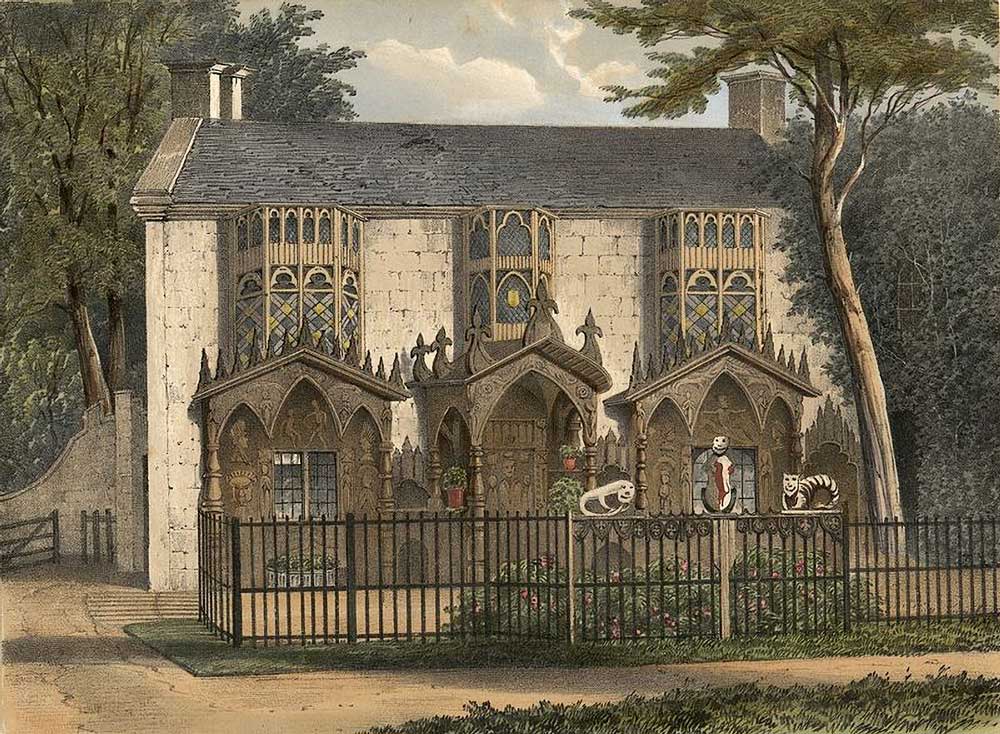
Plas Newydd 1840 W Walton © By permission of The National Library of Wales
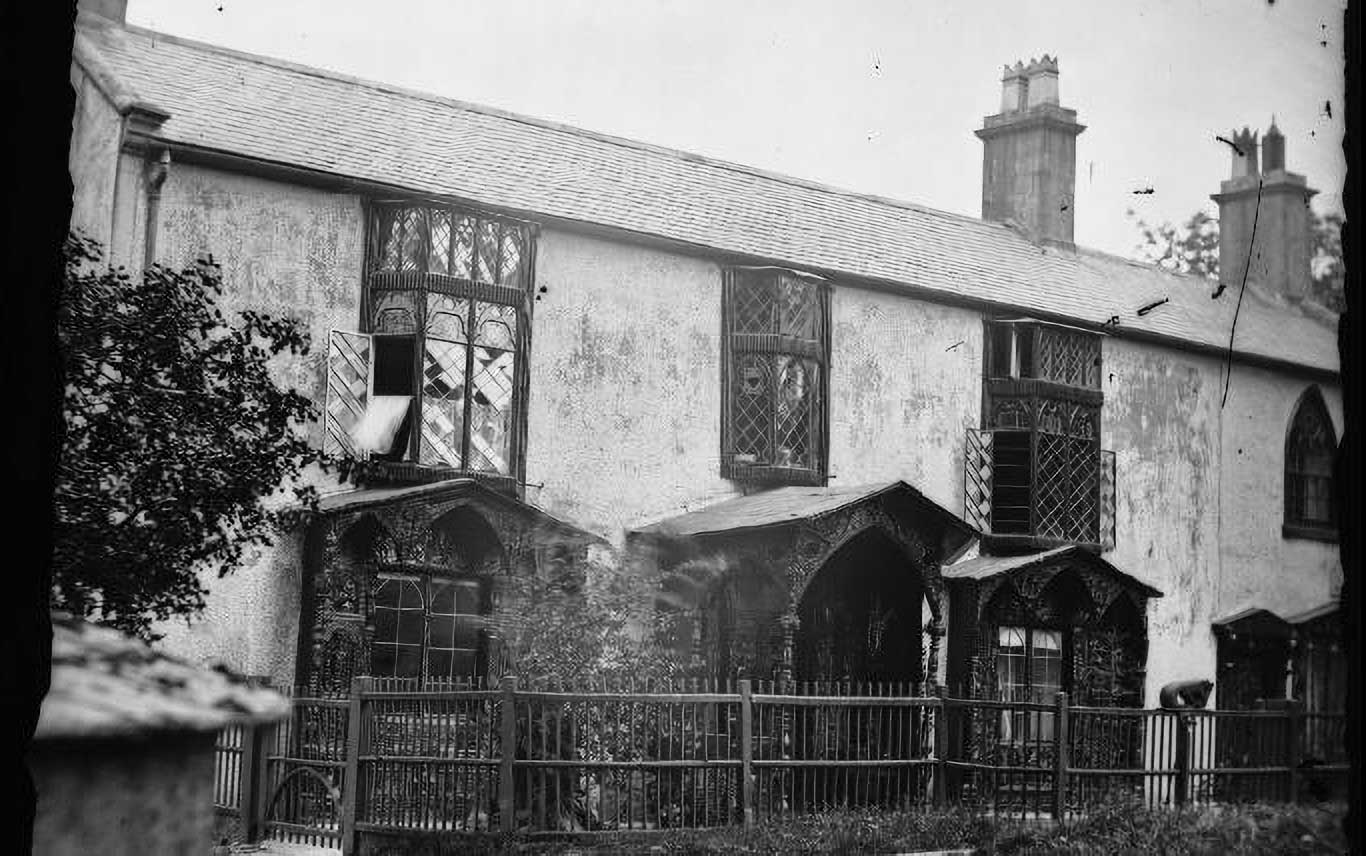
Plas Newydd 1875 John Thomas © By permission of The National Library of Wales
8. Llangollen Museum
Llangollen Museum is packed with many fascinating objects telling the history of Llangollen and the surrounding area. It has an impressive collection of over 1500 objects and more than 7000 photographs and documents, mostly donated by the local community. A wide variety of talks, events and exhibitions are organised during the year.
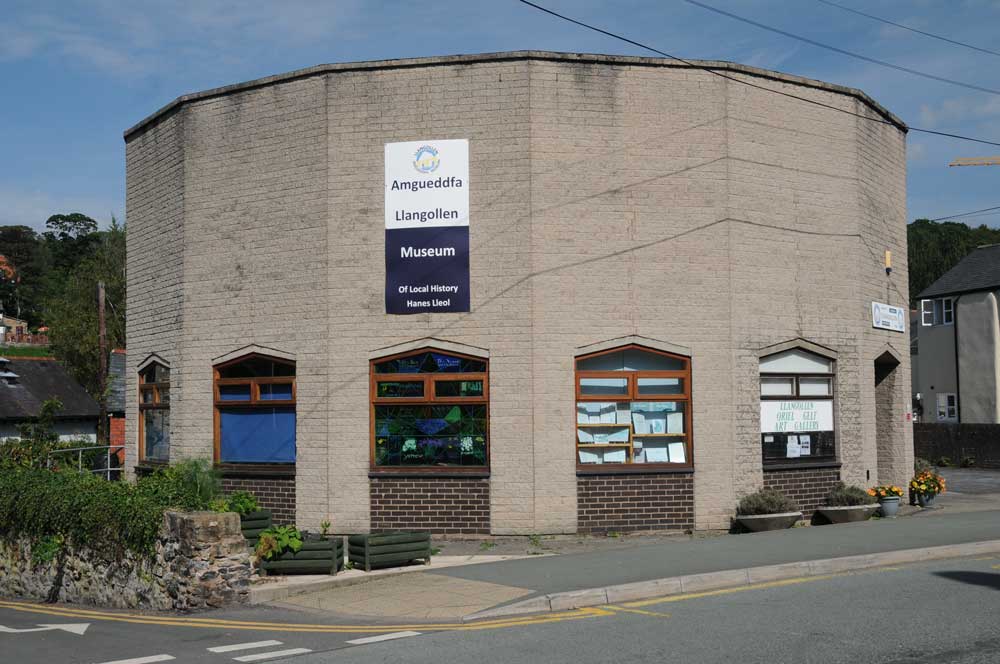
© Jo Danson
The striking replica of the Eliseg’s Pillar is a focal point of the museum. The weather worn pillar, which can be seen a short distance from Llangollen, dates back to AD 800s and originally had the names of the rulers of Powys on it. The pillar is all that remains of the original cross which gives its name to Valle Crucis, the Cistercian abbey nearby. You can find out more by listening to the fully bi-lingual animatronic monk talking about life in medieval times.
The Museum has a chain link from Chain Bridge, built in 1817.
Visit the Museum website for more information.
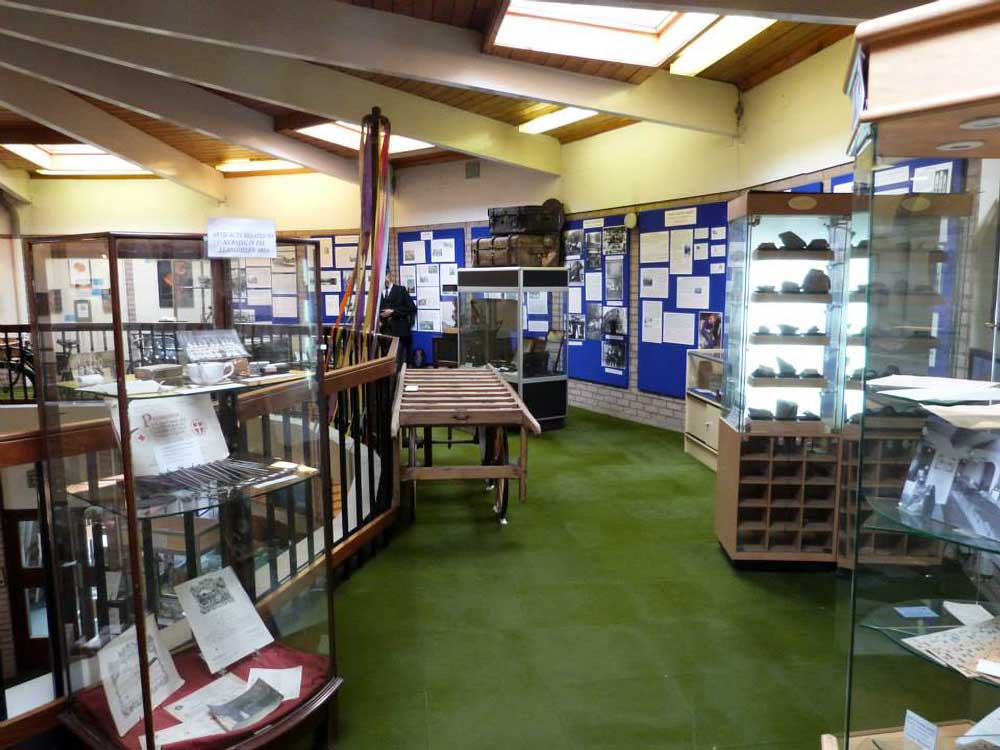
© Llangollen Museum
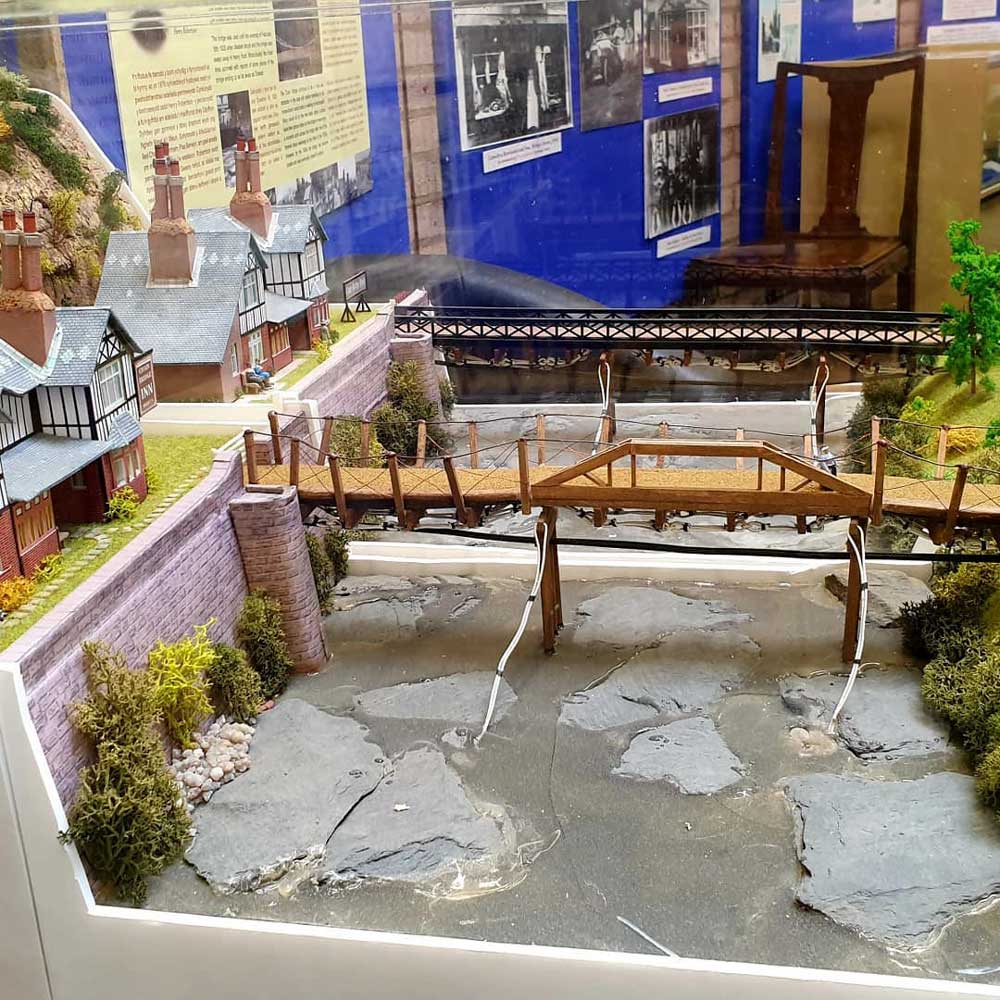
© Llangollen Museum
9. Llangollen Station and Railway
The Vale of Llangollen railway was approved and completed by the railway engineer Sir Henry Robertson and opened for passengers in 1862. Work started on the extension to Corwen the following year and opened in 1865.
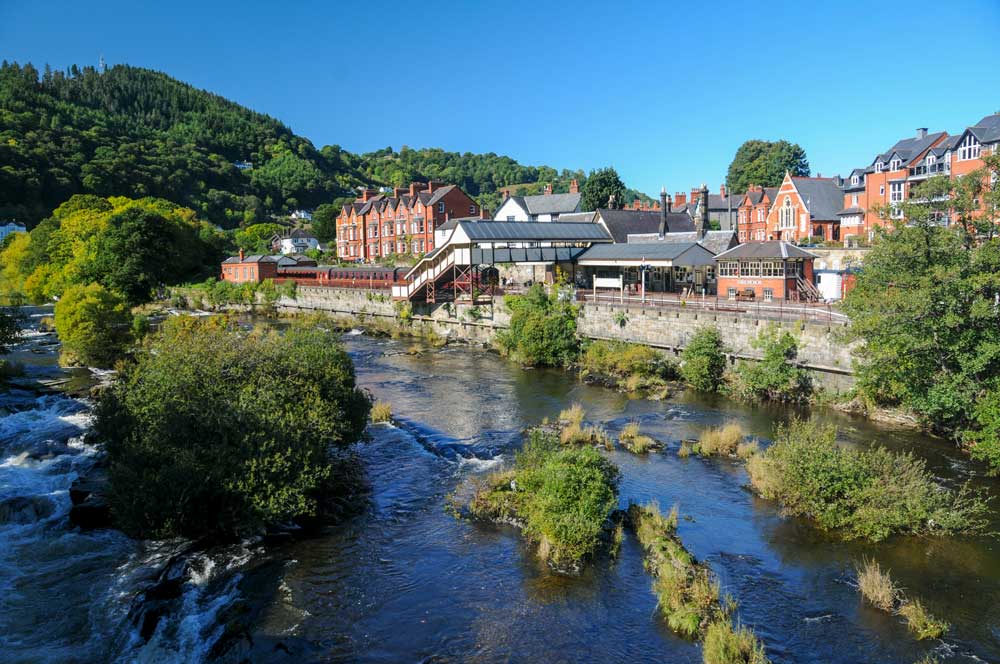
© Jo Danson
An extension to Barmouth was built by the Cambrian Railway, which became part of the Great Western Railway in 1923.
The station still has the distinctive chocolate and cream colours of the company. Further alterations and extensions were carried out at the station in 1898 when the track was doubled in width and new facilities provided including longer platforms, waiting shelters, a new signal box and a footbridge.
Flood damage closed the line between Llangollen and Bala in 1964. The following year it closed permanently following the Beeching Report on how to make the railways viable and the last British Railways train steamed into the station in 1968.
Thankfully railway enthusiasts rallied round and by September 1975 an open day saw 60 feet of track laid and the heritage Llangollen Railway line was born. As the number of volunteers grew, so did the line that was extended to Carrog in 1996 and again to Corwen East on the edge of the town in 2015, making a total length of 10 miles.
Thomas the Tank Engine, The Flying Scotsman and the Mallard all regularly make an appearance and while thousands of tourists enjoy travelling on the heritage railway many more enjoy watching it up and down the line.
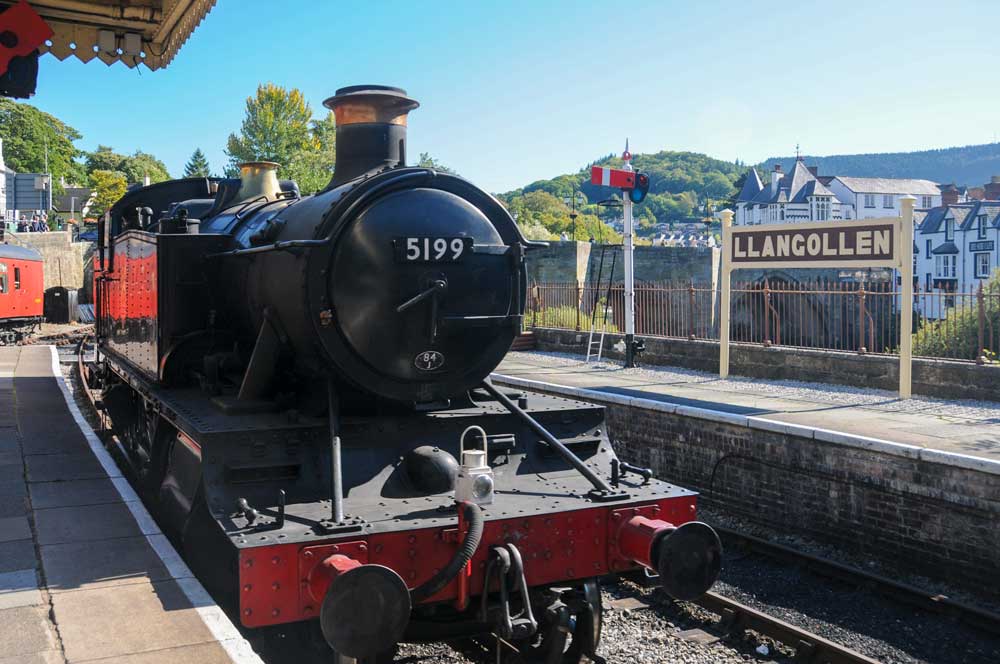
© Jo Danson
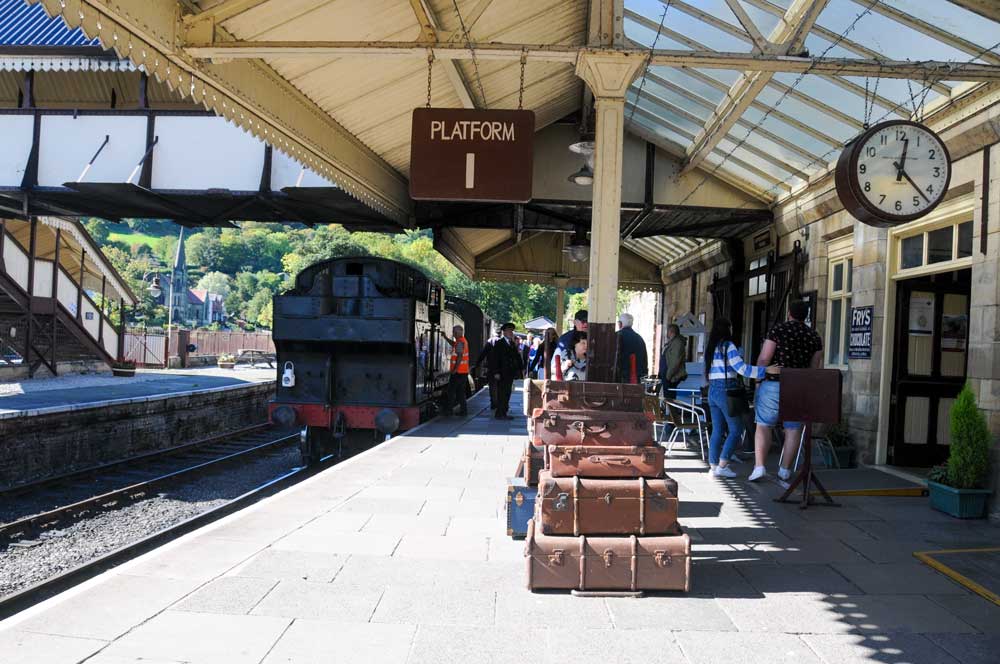
© Jo Danson
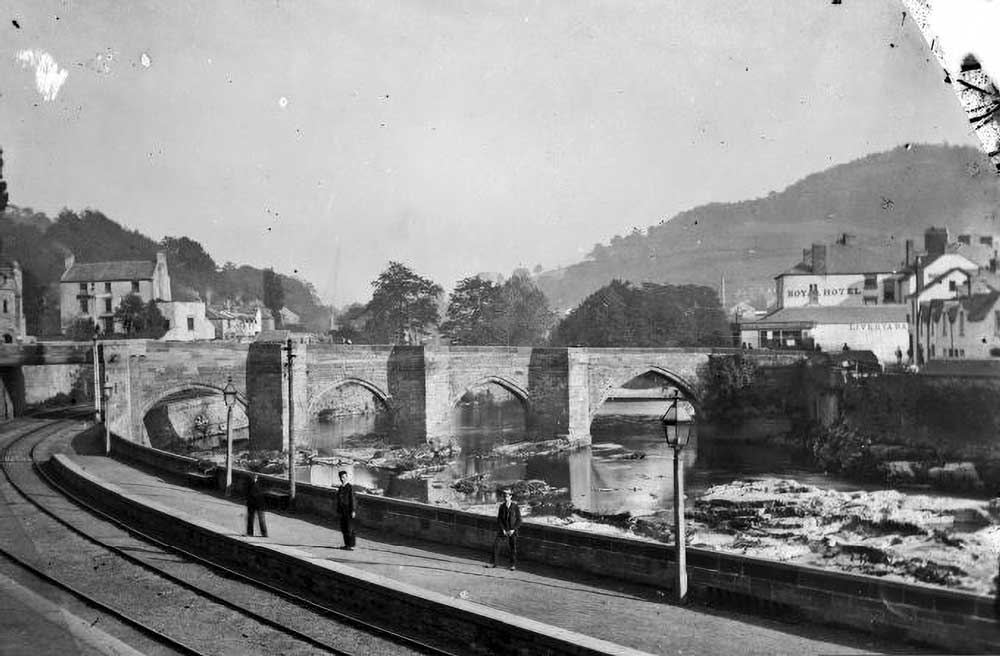
Bridge & Railway Station John Thomas 1875 © By permission of The National Library of Wales
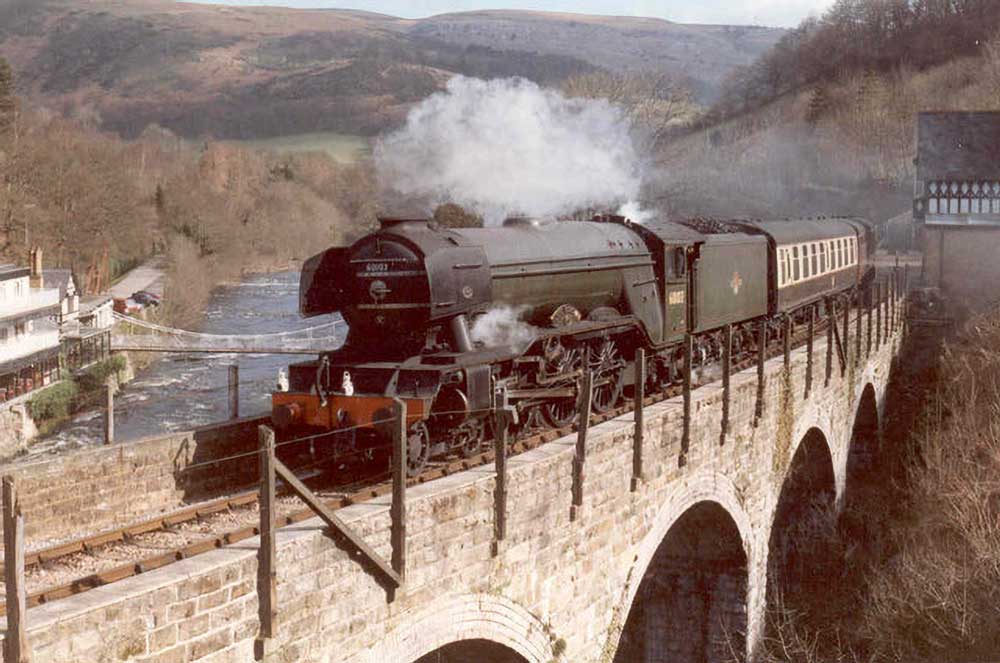
Flying Scotsman 1994 © Neil Kennedy
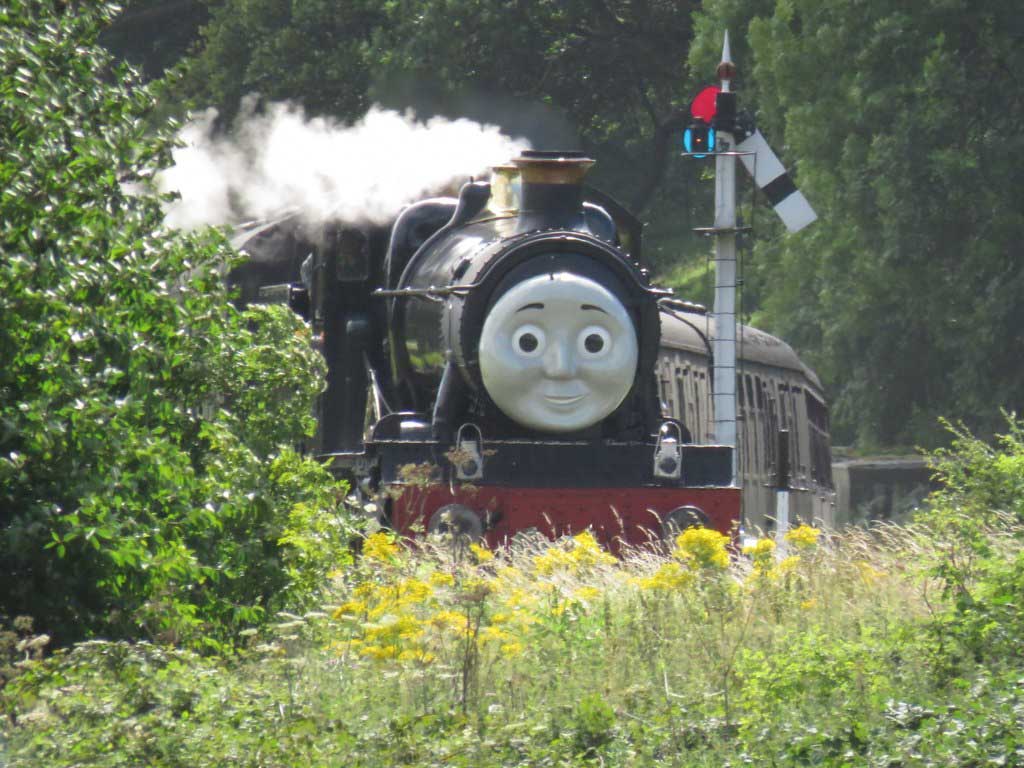
Thomas the Tank 2016 © Hywel Williams
10. Llangollen International Musical Eisteddfod
Llangollen International Musical Eisteddfod started as a peace initiative to bring war weary countries of Europe together in the beautiful Dee Valley. The first Eisteddfod was held in July 1947, attended by 40 overseas groups representing 14 different countries.
The first group of Germans to attend the Eisteddfod was the Luebeck Mixed Choir in July 1949. The compere was Hywel Roberts whose brother had been killed in the war. The audience were electrified to hear him greet the choir as ‘our friends from West Germany’. The Eisteddfod soon gained its reputation as ‘Where Wales meets the World’.
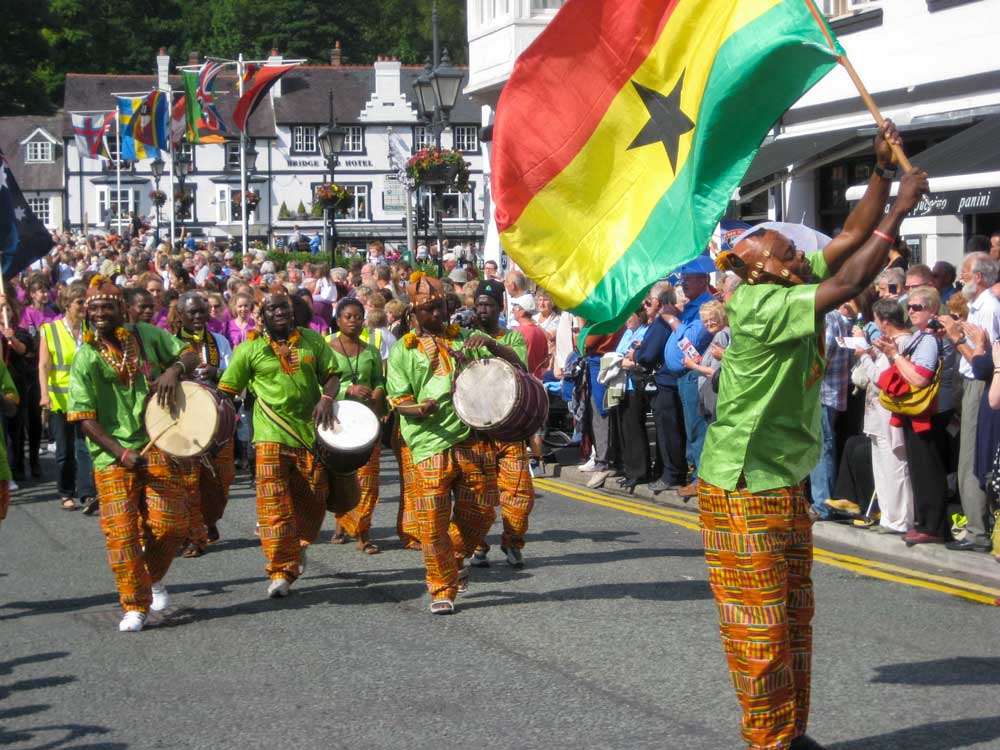
© Heather Williams
Queen Elizabeth II and Prince Philip came to the Eisteddfod in July 1953, shortly after the Coronation. The celebrated Welsh poet Dylan Thomas also attended and his impressions of the town were published the following year in ‘Quite early one morning’. It paints a wonderful description of the town with ‘the streets painted with tunes’ and ‘All day the song and dancing in this transformed valley, this green cup of countries in the country of Wales, goes on until the sun goes in’.
The Eisteddfod moved to its present location in 1958 with an enormous marquee erected for the event each year. As the competition grew, better facilities were needed and the Queen re-visited the Eisteddfod in 1992 to open the new pavilion.
During the Eisteddfod singers, dancers and musicians from around the world take part in over 20 high quality competitions, followed each evening by concerts where competitors sometimes share the stage with professional artists. Over 5000 people from around 50 countries perform to audiences of more than 50,000 over the six days of the event. There is also a parade through the town with competitors in their brightly coloured costumes.
Famous performers include Luciano Pavarotti, who first competed in 1955 with a choir from his home town Modena, flautist James Galway, violinist Nigel Kennedy, baritone Bryn Terfel and mezzo-soprano Katherine Jenkins.
Find out more about Llangollen International Music Eisteddfod here
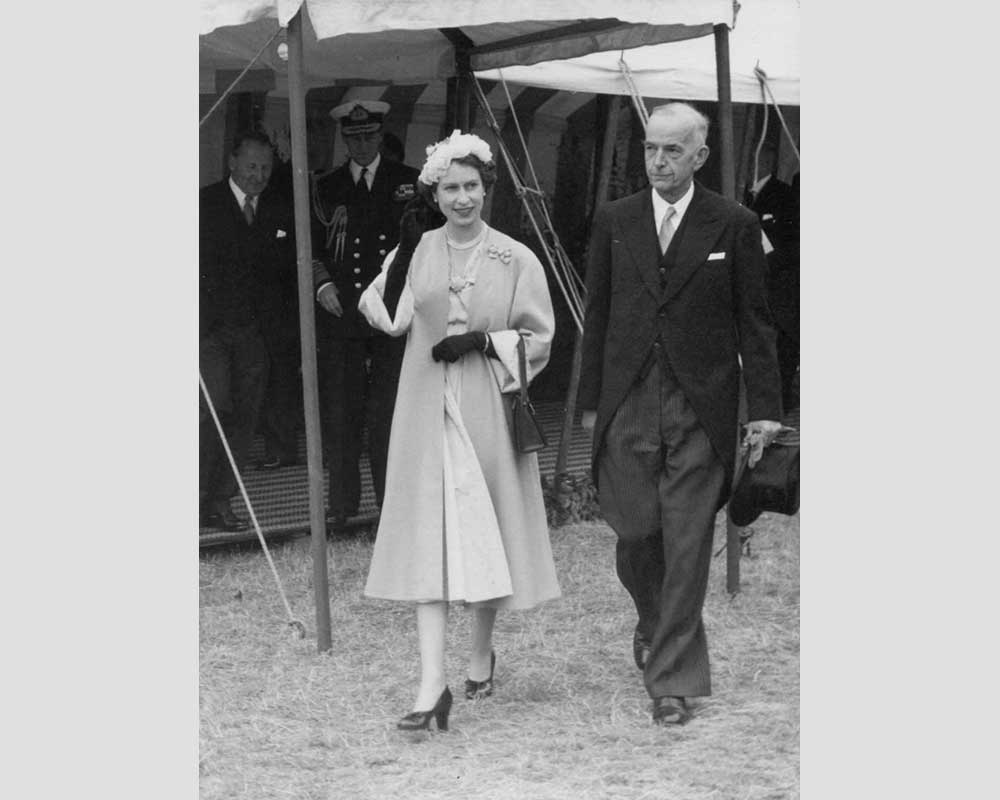
Queen Elizabeth 1953 © Llangollen Museum
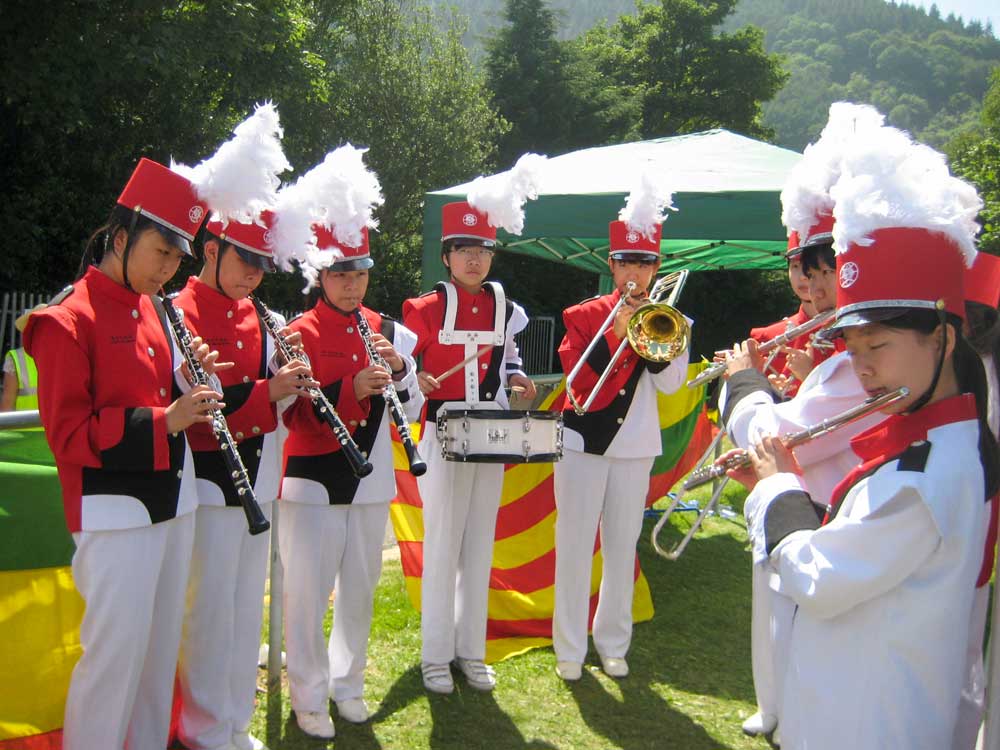
© Heather Williams
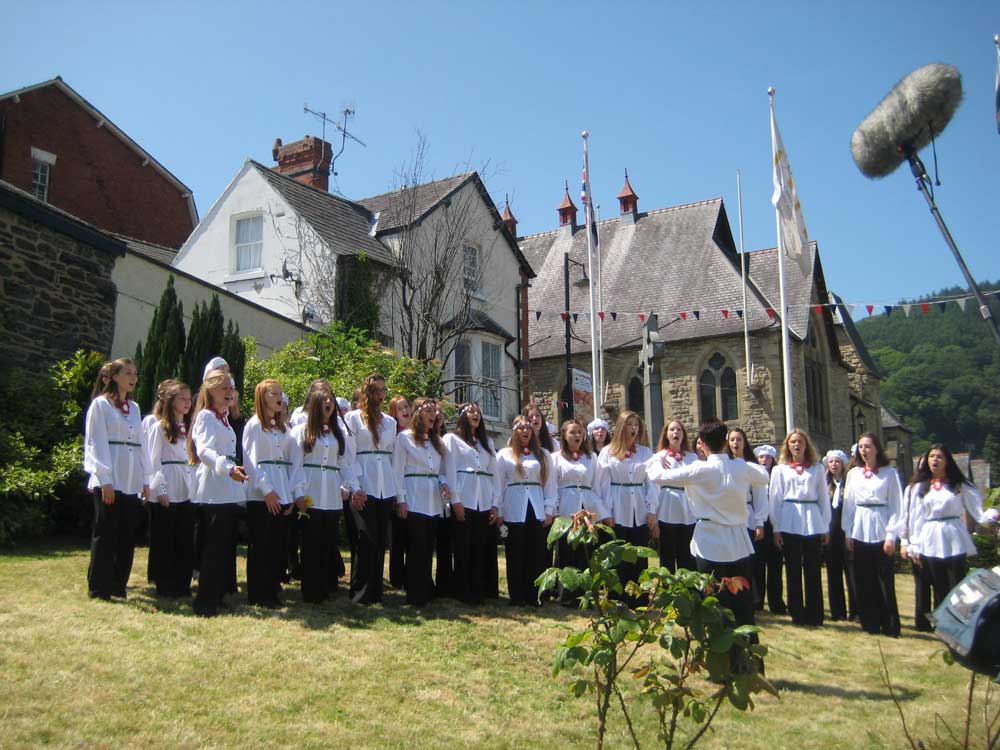
© Heather Williams
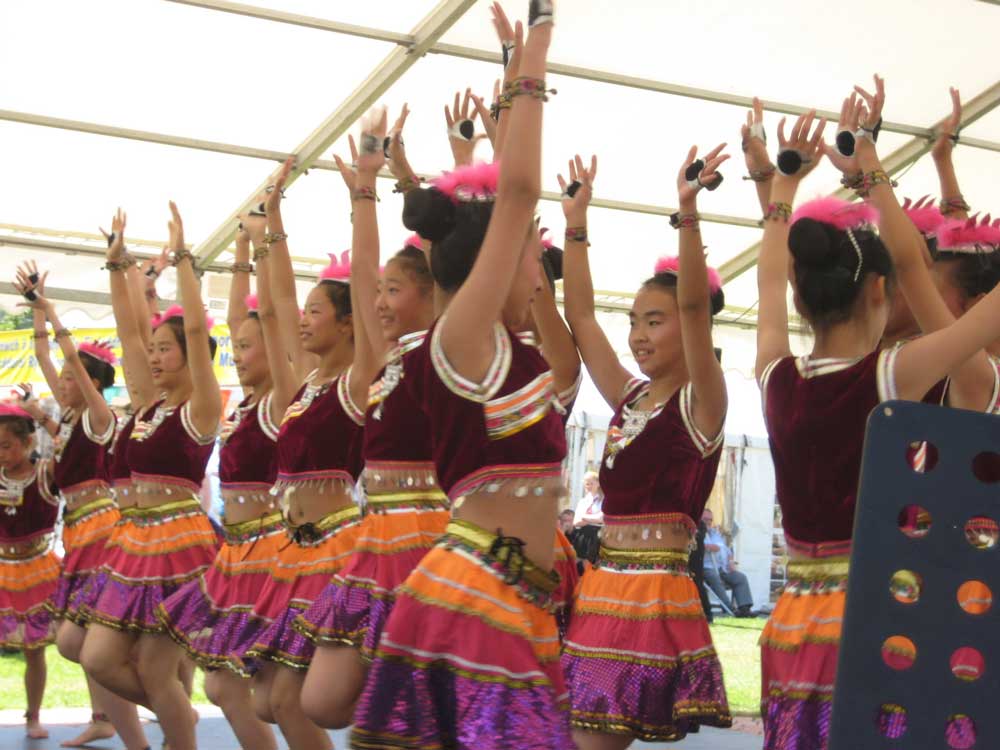
© Heather Williams
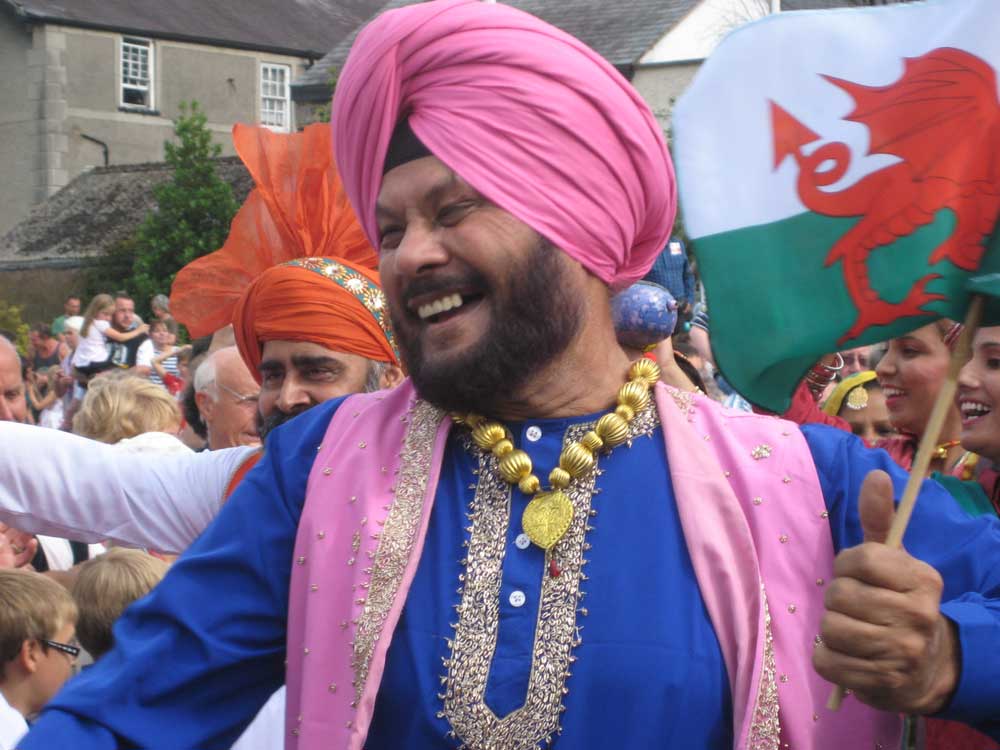
© Heather Williams

© Heather Williams
